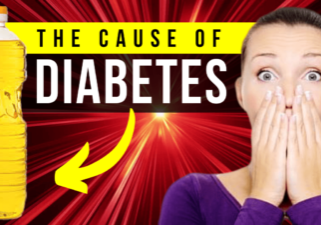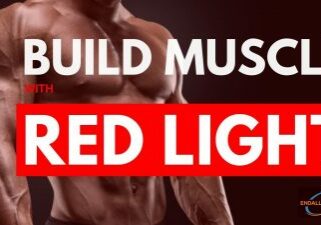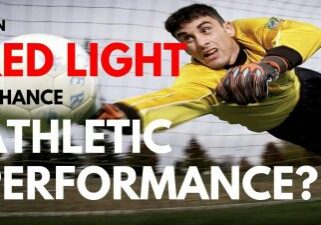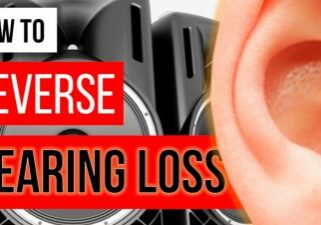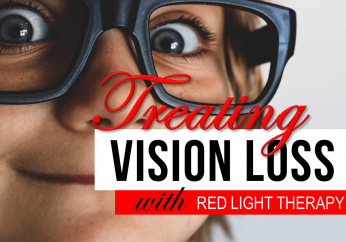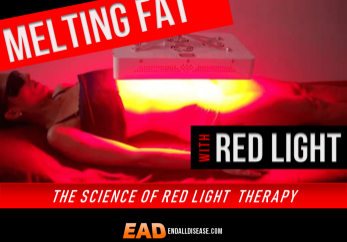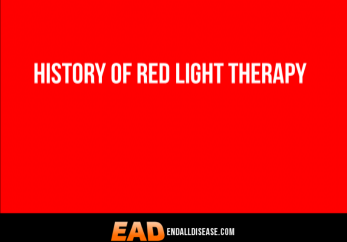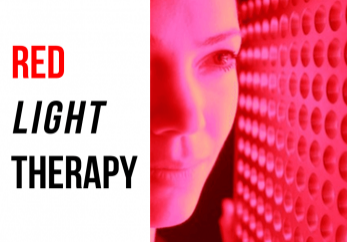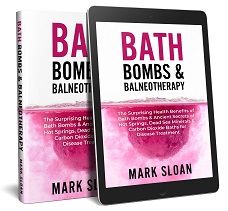YOUR COMPLETE GUIDE TO INFRARED & RED LIGHT THERAPY

Imagine a world without medical drugs and their endless lists of side effects. A world where a revolutionary new technology is used to accelerate healing of virtually all disease and conditions. Imagine red light therapy.
WHAT IS RED LIGHT THERAPY?
Red light therapy is a form of medicine that delivers energy to cells through the application of a range of both visible and invisible wavelengths of light. Other names for red light therapy include low-level laser therapy (LLLT), low intensity light therapy (LILT), phototherapy, photobiostimulation, biostimulation (BIOS), photobiomodulation, photonic stimulation, among others.
It was once believed that only red colored lasers exhibited healing effects, but it has since been established that the far less-expensive LED's (light emitting diodes) can also impart the same beneficial effects. This is fantastic news for the publc because it means very powerful healing devices are now available to everyone at affordable prices.
Red light therapy is an FDA approved treatment for pain and anti-aging uses, but if you look at the scientific literature, evidence indicates that red light can do much, much more.
It has been proven effective for a wide range of uses including anti-aging, pain relief, cognitive enhancement, wound healing, increasing bone density, increasing testosterone, reducing anxiety and depression, healing acne, preventing hair loss & hair regrowth, and many more indications that we will soon explore in detail.
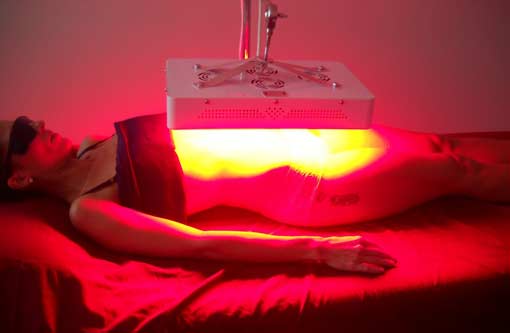
Infrared and red light theraparies are 100% natural treatments that have no adverse side effects and have been proven effective by hundreds of studies all across the world.
HISTORY

An electric arc incandescent light being used therapeutically in 1918. Source: Reclaiming the Maimed: A Handbook of Physical Therapy
Since the dawn of time, the therapeutic properties of light have been recognized and utilized for healing. Ancient Egyptians constructed solariums fitted with colored glass to harness specific colors of the visible spectrum to treat existing ailments. Early use by the Greeks and Romans emphasized the thermal effects of light, and in 1903, Neils Ryberg Finsen was awarded the Nobel Prize in Medicine for successfully utilizing Ultraviolet light for treating tuberculosis.(S) Finsen is regarded today by many as the father of modern phototherapy.
In 1910, John Harvey Kellogg published a book called Light Therapeutics, which documented many benefits imparted by light therapy using incandescent light bulbs and arc lights. Light therapy can be effectively used for diabetes, obesity, chronic fatigue, insomnia, baldness, cachexia and many other health problems, according to Kellogg in his book.
In 1904, two more influential volumes on light therapy were published: Light energy, its physics, physiological action and therapeutic applications by Margaret A. Cleaves and Elements of general radio-therapy for practitioners by Leopold Freund.
In the decades that followed, interest in the medicinal effects of light faded and was replaced by modern medical drug and surgical based treatments... that is, until the invention of the laser.
The Birth of the L.A.S.E.R (Light Amplification by Stimulated Emission by Radiation)
The laser was invented in 1960 by American Physicist Theodore H. Maiman. In 1967, Hungarian physician and surgeon Endre Mester (1903-1984) discovered that the laser had significant therapeutic effects.(S)

The Ruby Laser was the very first laser device in history. This image depicts the ruby laser pumping cavity both assembled and disassembled.
Working at Semmelweis University in Budapest, Hungary, Dr. Mester accidentally discovered that low-level ruby laser light could regrow hair in mice. While attempting to replicate a previous study which indicated red light could shrink tumors in mice, Mester noticed that the hair he had shaven off the mice grew back more quickly on the treated mice than on the placebos.(S)
Dr. Mester went on to discover that laser light could also accelerate the healing process in mice(S). Following this discovery, he founded the Laser Research Center at the Semmelweiss Medical University in Budapest in 1974, where he worked for the remainder of his life.
 Adam Mester, Dr. Andre Mester's son, was reported by New Scientist in 1987 - some 20 years after his father's discovery - to have been using lasers to treat 'otherwise incurable' ulcers. "He takes patients referred by other specialists who can do no more for them," the article reads. "Of the 1300 treated so far, he has achieved complete healing in 80 percent and partial healing in 15 percent."(S)
Adam Mester, Dr. Andre Mester's son, was reported by New Scientist in 1987 - some 20 years after his father's discovery - to have been using lasers to treat 'otherwise incurable' ulcers. "He takes patients referred by other specialists who can do no more for them," the article reads. "Of the 1300 treated so far, he has achieved complete healing in 80 percent and partial healing in 15 percent."(S)
Interestingly, unable to explain how the laser was having beneficial physiological effects on people, many scientists and physicians at the time had been calling its therapeutic effects "magic".
In North America, red light research didn't begin to take hold until the beginning of the 21st century. Since that time, publishing activity has seen an almost exponential growth, particularly within the most recent years. A quick search on PubMed of the various terms that describe light therapy renders thousands of published scientific and clinical studies (as of December 2017):
- Phototherapy = 37,785 studies
- Photobiomodulation = 510 studies
- Photostimulation = 1,067 studies
- Lllt = 5,139 studies
- Low-level laser therapy = 5,910 studies
- Near-infrared light = 8,431 studies
Now that we understand the history of red light and its popularity, let's look at what exactly red light is and how it can heal.
WHY RED LIGHT?
Shine light through a prism and it will fragment into all the colors that makeup the visible spectrum of light, including red, orange, yellow, green, blue and purple.
Most people are aware that sunlight is a rich source of vitamin D, which protects us from numerous ailments such as autoimmune disorders, various types of cancer and cardiovascular disease (S).
What most people aren't aware of is the other significant source of medicinal radiation the sun offers us: Light emitted in the red and infrared end of the spectrum.
Since the infrared spectrum of radiation ranges from low-, to middle- to high-infrared, it's important to clarify that in this book, we are primarily talking about near-infrared light or radiation, which ranges from around 700nm to 1500nm, depending on where you source your information. Red light ranges from about 600nm-700nm.
Infrared saunas have seen an increase in popularity in recent years. The wavelength of radiation administered by infrared saunas is usually far greater than the therapeutic range of near-infrared and imparts it's therapeutic effects differently. Far infrared saunas range in bandwidth from about 3000nm to 1mm.
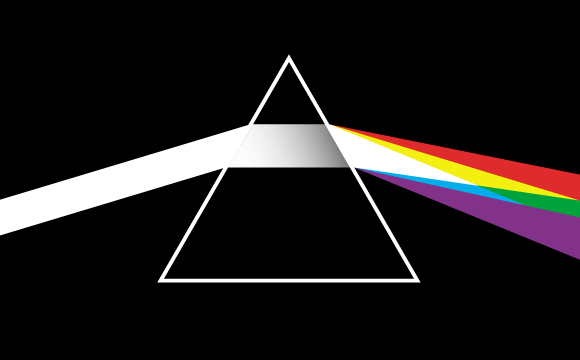
RED VS. NEAR-INFRARED LIGHT
Red and infrared light have very similar physiological effects, the primary difference being that infrared light penetrates deeper into the body, meaning its healing frequencies can reach more cells. For all practical purposes, infrared light therapy or a combination of red and infrared light is probably ideal.
The frequencies of red and infrared that have demonstrated in scientific studies to be the most therapeutic are as follows:
Red light wavelength: 620-700nm
Infrared light wavelength: 700-1100nm.
Many devices today project multiple wavelengths of either red or infrared light and some even combine both red and infrared wavelengths into a single device.
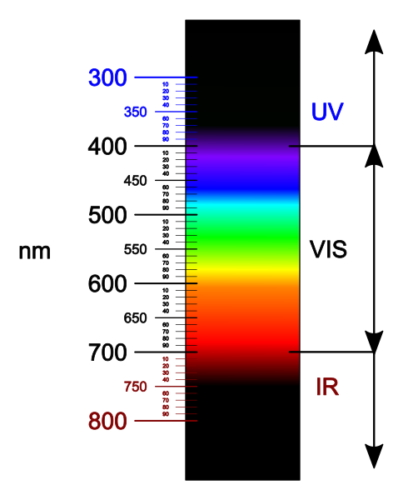
A TO Z PROVEN BENEFITS OF RED LIGHT THERAPY
Over the past 100 years, infrared and red light therapies have been studied extensively on human beings for dozens of diseases and conditions with great promise. The findings of studies conducted on a variety of other creatures have been equally as promising for both safety and efficacy; for example, rats(S), mice(S), rabbits(S), minipigs(S), dogs(S), monkeys(S), pigs(S), sheep(S), horses(S), cows(S), cats(S), sand rats(S), gerbils(S), guinea pigs(S), frogs(S), bumblebees(S), fruit flies(S), sea urchin larvae(S), snails(S), roundworms(S), earthworms(S) and flat worms(S).
Since the cellular metabolic processes for humans and other creatures are similar, the observed health benefits are often similar or uniform among different species. The following is a list of diseases and conditions found to benefit from red and infrared light. Some of these studies have been well-established through scientific reviews and meta-analysis and others are said to be controversial.
- Achilles Tendinitis(S)(S)
- Achilles Tendinopathy (S)(S)
- Acne (S)(S)(S)
- Addiction (S)
- Amblyopia (S)
- Age-Related Macular Degeneration (S)(S)
- Alzheimer's Disease (S)
- Aphthous Ulcers (S)(S)(S)
- Bell's Palsy (S)(S)(S)
- Bone Fractures (S)(S)(S)
- Burn Scars (S)
- Burning Mouth Syndrome (S)(S)
- Carpal Tunnel Syndrome (S)(S)
- Cellulite (S)
- Chronic Joint Disorders (S)
- Cognitive Enhancement (S)(S)(S)(S)
- Cold Sores (herpes labialis) (S)(S)
- COPD (S)
- Dental Implant Stability (S)
- Dentin Hypersensitivity (S)
- Depression (S)(S)(S)
- Diabetic Foot Ulcer (S)(S)
- Dry Mouth (xerostomy) (S)(S)(S)
- Dysmenorrhea (S)(S)
- Elbow Tendinopathy (Tennis Elbow) (S)
- Exercise Performance and Recovery (S)(S)(S)(S)(S)
- Fibromyalgia (S)(S)
- Frozen Shoulder (S)
- Glaucoma (S)
- Hair Loss (alopecia) (S)(S)
- Hand-foot-and-mouth disease (S)
- Hypothyroidism (S)(S)(S)
- Lichen Planus (S)
- Low Back Pain (S)(S)(S)
- Lymphedema (S)(S)(S)
- Maxillary Sinusitis (S)
- Meniscal Pathology (S)
- Muscle Growth (S)(S)
- Muscle Pain (S)
- Neck Pain (S)(S)
- Neuropathic Foot Ulcer (S)
- Nipple Pain from Breastfeeding (S)(S)
- Obesity (S)(S)(S)
- Oral Mucositis (S)(S)(S)
- Orthodontic Pain (S)(S)(S)
- Orthodontic Tooth Movement (S)
- Osteoarthritis (S)(S)(S)
- Osteoporosis (Bone Loss) (S)(S)
- Pain (S)(S)
- Periodontitis (Gum Disease) (S)
- Postherpetic Neuralgia (S)
- Pressure Ulcer (S)(S)
- Radation Dermatitis (S)(S)(S)
- Raynaud's Phenomenon (S)
- Restenosis (S)
- Rheumatoid Arthritis (S)(S)(S)
- Shoulder Tendinopathy (S)
- Skin Aging (S)(S)
- Sternotomy Incision Repair (S)(S)(S)
- Stroke (S)(S)(S)
- Sunburn Prevention (S)
- Temporomandibular Disorders (S)
- Tendinopathy (S)
- Testosterone Deficiency (S)
- Toenail Fungus (S)(S)(S)
- Traumatic Brain Injury (S)(S)
- Venous Leg Ulcers (S)
- Vitiligo (S)(S)
- Wound Healing (S)(S)(S)
Despite the large amount of published health research papers on red and infrared light, research is ongoing and there is still much to be learned. Universities and other establishments are in constant recruitment of volunteers to participate in new clinical trials using red and infrared low-level lasers and LEDs.
HOW IT WORKS
Red and infrared light therapies impart their effects by enhancing cellular mitochondrial function and ATP production. Red and especially infrared light penetrate deeply into body tissues, where they are absorbed by an enzyme inside the mitochondria of cells called cytochrome c oxidase. The result is an increase in oxygen consumption within the mitochondria of cells and greater synthesis of cellular energy (called ATP).(S)(S) Cytochrome C Oxidase

A transmission electron microscopic image of two healthy mitochondria floating inside a mammalian lung cell, inside which cytochrome c oxidase resides.
Cytochrome c oxidase is an essential respiratory enzyme that interacts directly with oxygen(S) and catalyzes the very last step in the process of oxidative phosphorylation or energy production.(S)(S). Dr. Otto Warburg discovered cytochrome c oxidase in 1926 and received a nobel prize for it.(S) Since then it has been found that a defect in this enzyme's activity will turn a healthy cell into a cancer cell: "Defects in cytochrome c oxidase expression induce a metabolic shift to glycolysis and carcinogenesis," wrote scientists from the University of Pennsylvania in 2015.(S). A defect in this critical enzyme has also been implicated in tumor progression.(S). A number of chemical toxins have been proven to inhibit cytochrome c oxidase activity, including chemotherapy(S), cyanide(S)(S)(S), carbon monoxide(S)(S), aluminum phosphide(S), estrogen(S), serotonin(S), endotoxin(S)(S), aflatoxin B1(S), UVB radiation(S), X-ray radiation(S)(S), and unsaturated fatty acids(S). Many of these poisons upregulate the production of nitric oxide, which is another toxin(S) that binds directly to cytochrome c oxidase, inactivating it.(S)(S)(S). Red Light, Nitric Oxide and Cytochrome C Oxidase Remarkably, light in the red and infrared spectrum has been shown to unbind (aka photodissociate) nitric oxide from the cytochrome c oxidase enzyme(S)(S). The photodissociation of nitric oxide plus the direct photoabsorption of light by cytochrome c oxidase amplifies the enzyme's activity(S)(S)(S)(S)(S)(S)(S)(S)(S)(S)(S)(S)(S)(S)(S)(S)(S)(S)(S), resulting in increased metabolic activity and a host of physiological changes that account for the broad ranging beneficial effects of red and near-infrared light therapies. Is increased ATP the primary mechanism behind red light benefits? ATP is an important biological catalyst and a primary driver of the majority of cell functions. Light therapy increases the synthesis of ATP through the amplification of cytochrome c oxidase activity during mitochondrial respiration. There's another very fundamental outcome of cellular exposure to red light that I haven't read any scientists discuss in the hundreds of studies I've viewed - the elephant in the room if you will. For its ability to perpetuate increased ATP production through the shuttling oxygen into cells (the bohr effect) and its ability to dilate blood vessels, carbon dioxide, generated alongside ATP, is the real star of the show.
The following primary mechanisms I propose, based on the evidence I've investigated, are primarily responsible for the broad range of benefits of red and near-infrared light.
MY EXPERIENCE WITH RED LIGHT THERAPY
My name is Mark, creator of EndAllDisease. I first learned about red and near-infrared light therapies in 2014 while searching online for effective alternative treatments that I could use to improve my health and life. At that point I had tried dozens of other supplements and foods with limited successes. Red light sounded promising so I bought a red light device and began experimenting with it on myself.
After my first 12 minutes of treatment, immediately I felt more relaxed as if my stress had melted away. I think this is due to red light's ability to reduce stress hormones like cortisol and adrenaline in the body.
Next, I held the light up against my forehead to see how red light would impact my brain function. I didn't notice anything until I left home and began interacting with people. The effects were profound. My brain cells felt energized and the quality and speed of my thoughts and speech were markedly enhanced.
Today I use red light almost everyday on my brain, particularly before work in order to ensure my cognition is at peak function. I shine near-infrared and red light therapy on my thyroid, which enhances metabolism and energy levels throughout the day. I also use light therapy on my testicles, after noticing significant enhancement of my sexual function.
SELECT YOUR RED LIGHT THERAPY DEVICE
- STORE -
THE FUTURE OF MEDICINE
The most advanced healing technologies and products for your metabolism in the world - at a discount!
Already signed up? Check your email!
Links to your Insider deals are at the bottom of every email.
METHYLENE BLUE THERAPY:
RED LIGHT THERAPY
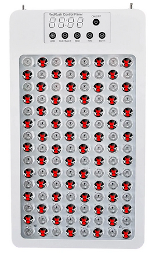
Red + Near-Infrared 360 Watt Device
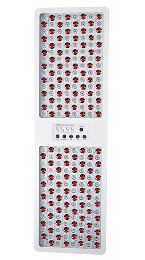
Red + Near-Infrared 720 Watt Device

Red + Near-Infrared 840 Watt Device PULSED
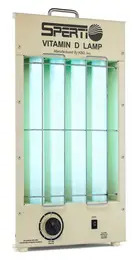
Vitamin D Ultraviolet Sunlamp
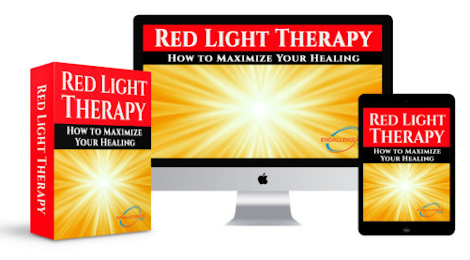
The World's First Red Light Therapy Video Course by #1 Bestselling Author Mark Sloan
A $699 VALUE - FREE FOR INSIDERS!
BALNEOTHERAPY/WATER CURE THERAPY:
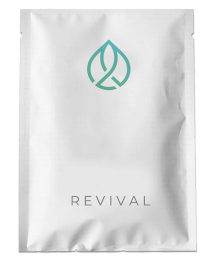
Premium Healing Bath Mix
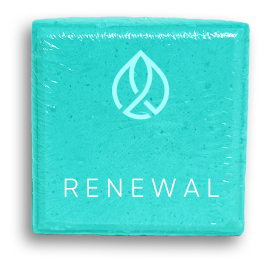
Ultimate 20-Minute Bath Bomb
HORMONE THERAPY:
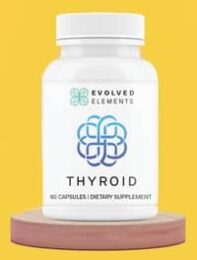
Thyroid Hormone (200mg)
CARBON DIOXIDE THERAPY:

BODYSTREAM CO2 INFUSION SUIT

CARBOGEN GENERATOR
#1 BESTSELLING BOOKS BY MARK SLOAN:
Learn more about the therapies above in my books below.
FAMOUS QUOTES ABOUT RED LIGHT THERAPY
“Metabolism is unquestionably stimulated by the reflex action set out by the light rays impinging upon the nerve endings of the skin and retina… oxidation of living tissues is increased by the action of sunlight. In human beings as well as in animals, less carbon dioxide is emanated at night than during the same number of hours of daylight.”
- Dr. John Harvey Kellogg“Penetrating red light is possibly the fundamental anti-stress factor for all organisms. The chronic deficiency of such light is, I think, the best explanation for the deterioration which occurs with aging."
- Dr. Raymond Peat“We have shown that light can indeed reverse the inhibition caused by NO binding to cytochrome oxidase, both in isolated mitochondria and in whole cells. And what's more, we found that light can protect cells against NO-induced cell death."
- Guy Brown, Biochemist at the University of Cambridge, UK“Many people who came to cloudy Eugene to study, and who often lived in cheap basement apartments, would develop chronic health problems within a few months. Women who had been healthy when they arrived would often develop premenstrual syndrome or arthritis or colitis during their first winter in Eugene.."
- Dr. Raymond Peat
QUESTIONS & ANSWERS
►What is a wavelength?
When electromagnetic radiation, like radio waves, light waves or far infrared waves travel through space they are said to make their own characteristic repeating patterns. The wavelength is simply the distance over which the wave's shape repeats. For example, red light has a shorter wavelength than near infrared, and far infrared has an even larger wavelength.
►What's the difference between a far infrared sauna and red/infrared light therapy?
The benefits of a far infrared sauna are not based on the same mechanism as the benefits of light therapy. While light therapy is photoabsorbed by the respiratory enzyme cytochrome c oxidase and has its effects through the action of increased mitochondrial activity and ATP production, the thermal effects of far infrared saunas are what is responsible for its benefits.
The most relevant wavelengths of red and infrared radiation for healing range from 600 to about 1100nm. And even the shortest-wavelenth of far infrared sauna's today don't generally fall below 1400nm.
►What is the difference between a far infrared sauna and near infrared sauna?
The main difference between a far infrared sauna and near infrared light is the type of radiation delivered. Both are comprised of radiation that's invisible to the human eye and near infrared has a much shorter wavelength than far infrared.
Unline near infrared radiation, radiation at the far infrared wavelength produces harmful electromagnetic fields, making metal shielding surrounding far infrared heating elements essential to protect the people inside. The result is a higher-cost, reduced efficiency sauna compared to it's near-infrared counterpart.
►What are the wavelengths of near, middle and far infrared?
The infrared spectrum (comprised of near, middle and far infrared) ranges from 700 nm – 1 mm. A search online for the exact wavelengths of near, mid and far infrared has rendered an assortment of different numbers - it appears nobody agrees. The wavelengths below are from a paper called The Fundamentals of Far-Infrared by Cheah Kok Wai from the Department of Physics at Hong Kong Baptist University(S):
- Near Infrared (also called Infrared-A or IR-A) = 700nm - 1400nm
- Mid Infrared (also called Infrared-B or IR-B) = 1,400nm - 3,000nm
- Far-Infrared (also called Infrared-C or IR-C) = 3,000nm - 1mm
►Can incandescent, halogen, heat lamps and fluorescent lights be used therapeutically?
Incandescent, halogen and heat lamps do in fact produce a significant amount of red and infrared light. In addition to using my red light therapy LED device therapeutically almost daily, I have 5 infrared heat lamps setup in my home above the couch and above my bed to make my environment healthier and more relaxing.
A large portion of the 250Watts emitted by heat lamps is in the form of IR-B radiation which has a soothing, warming effect. About 12% of their power is used to emit the therapeutic wavelengths (600-1100nm). But since 250Watts is a significant amount of power, that 12% of red and near-infrared wavelengths has noticable positive health effects in my experience. Incandescent and halogen lights emit as much as 35% of their total power output within the therapeutic range.
Fluorescent bulbs are another story. Fluorescent bulbs emit some ultraviolet light but a very small amount of the protective red and infrared radiation, which is likely why many people experience harmful effects from these lights.
►Is infrared-red light therapy safe?
I've read hundreds of study abstracts and have never seen an adverse reaction reported in the scientific literature. This is because the energy intensity of the red and near infrared wavelengths is very low. The amount of energy exposure during red light therapy treatment is so low that tissue temperatures don't increase more than a few tenth's of a degree and thus pose no risk of thermal injury.(S)
Red light therapy's nearly non-thermal effects make it particularly attractive for use on fresh injuries when heat would likely worsen swelling and inflammation. Harvard professor Dr. Hamblin has said that some people have reported headaches and eye strain from the treatment, although research shows the eyes are benefitting from the treatment despite the strain from bright lights.
For what it's worth, Red light therapy is an FDA approved treatment and is considered safe by the US Government.
►Can I get a tan (or burn) from infrared or red light therapy?
A sun tan is a result of the body producing pigmentation in the skin in response to and to protect from future UV exposure. Neither red nor infrared light therapies include any ultraviolet radiation and thus will not cause tanning or burning of the skin.
►How long do the LEDs on a red light device last?
The rating on RedLightMan and many other light therapy products is 50,000+ hours. If you kept your device on 24 hours a day, that's almost 6 years! I've had mine for over 3 years and it's still going strong.

Written by: Mark Sloan
REFERENCES
History of Red Light Therapy
- Majeed F. Low levels of Vitamin D an emerging risk for cardiovascular diseases: A review. Int J Health Sci (Qassim). 2017;11(5):71-76.
https://www.ncbi.nlm.nih.gov/pubmed/29114197 - Neils Ryberg Finsen – Biographical. Available: https://www.nobelprize.org/nobel_prizes/medicine/laureates/1903/finsen-bio.html [February 10th, 2018].
- Hamblin MR. Shining light on the head: Photobiomodulation for brain disorders. BBA Clin. 2016;6:113-124.
https://www.sciencedirect.com/science/article/pii/S2214647416300381 - Mester E, Szende B, Gärtner P. [The effect of laser beams on the growth of hair in mice]. Radiobiol Radiother (Berl). 1968;9(5):621-6.
https://www.ncbi.nlm.nih.gov/pubmed/5732466 - Chung H, Dai T, Sharma SK, Huang YY, Carroll JD, Hamblin MR. The nuts and bolts of low-level laser (light) therapy. Ann Biomed Eng. 2012;40(2):516-33.
https://link.springer.com/article/10.1007/s10439-011-0454-7 - New Scientist. 1987. The ‘healing laser’ comes into the limelight. Available: https://books.google.ca/books?id=qxwPsfm2RS8C&pg=PA32&redir_esc=y#v=onepage&q&f=false [February 10th, 2018].
Red and Near-Infrared Radiation
- Schnatz PF, Manson JE. Vitamin D and cardiovascular disease: an appraisal of the evidence. Clin Chem. 2014;60(4):600-9.
http://europepmc.org/articles/PMC3972312 - Valtsu’s Blog. 2017. The Therapeutic Effects of Red and Near-Infrared Light (2017). Available: https://valtsus.blogspot.ca/2017/05/the-therapeutic-effects-of-red-and-near.html [February 10th, 2018].
- Hong Kong Far Infrared Rays Association. Fundamentals of Far-Infrared. Available: http://www.hkfira.org/webhp/upload/fir_105/20090828-02%20-%20Prof%20Cheah%20-%20HKBU%20-%20Fundamental%20of%20FIR.pdf [February 10th, 2018].
The Science of Red Light Therapy
- De brito A, Alves AN, Ribeiro BG, et al. Effect of photobiomodulation on connective tissue remodeling and regeneration of skeletal muscle in elderly rats. Lasers Med Sci. 2017.
https://link.springer.com/article/10.1007/s10103-017-2392-6 - Trawitzki BF, Lilge L, De figueiredo FAT, Macedo AP, Issa JPM. Low-intensity laser therapy efficacy evaluation in mice subjected to acute arthritis condition. J Photochem Photobiol B, Biol. 2017;174:126-132.
https://link.springer.com/article/10.1007/s10103-017-2235-5 - Meyer DM, Chen Y, Zivin JA. Dose-finding study of phototherapy on stroke outcome in a rabbit model of ischemic stroke. Neurosci Lett. 2016;630:254-8.
https://www.sciencedirect.com/science/article/abs/pii/S0304394016304475 - Figurová M, Ledecký V, Karasová M, et al. Histological Assessment of a Combined Low-Level Laser/Light-Emitting Diode Therapy (685 nm/470 nm) for Sutured Skin Incisions in a Porcine Model: A Short Report. Photomed Laser Surg. 2016;34(2):53-5.
https://www.medscape.com/medline/abstract/26741109 - Oron U, Yaakobi T, Oron A, et al. Low-energy laser irradiation reduces formation of scar tissue after myocardial infarction in rats and dogs. Circulation. 2001;103(2):296-301.
http://circ.ahajournals.org/content/103/2/296 - Darlot F, Moro C, El massri N, et al. Near-infrared light is neuroprotective in a monkey model of Parkinson disease. Ann Neurol. 2016;79(1):59-75.
http://onlinelibrary.wiley.com/doi/10.1002/ana.24542/full - Blatt A, Elbaz-greener GA, Tuby H, et al. Low-Level Laser Therapy to the Bone Marrow Reduces Scarring and Improves Heart Function Post-Acute Myocardial Infarction in the Pig. Photomed Laser Surg. 2016;34(11):516-524.
http://www.cryousasolutions.com/wp-content/uploads/2016/05/Laser-to-bone-marrow-THOR-Research-Digest.pdf - Freddo AL, Hübler R, De castro-beck CA, Heitz C, De oliveira MG. A preliminary study of hardness and modulus of elasticity in sheep mandibles submitted to distraction osteogenesis and low-level laser therapy. Med Oral Patol Oral Cir Bucal. 2012;17(1):e102-7.
https://www.academia.edu/15249342/A_preliminary_study_of_hardness_and_modulus_of_elasticity_in_sheep_mandibles_submitted_to_distraction_osteogenesis_and_low-level_laser_therapy - Petersen SL, Botes C, Olivier A, Guthrie AJ. The effect of low level laser therapy (LLLT) on wound healing in horses. Equine Vet J. 1999;31(3):228-31.
http://onlinelibrary.wiley.com/doi/10.1111/j.2042-3306.1999.tb03177.x/full - Ghamsari SM, Taguchi K, Abe N, Acorda JA, Sato M, Yamada H. Evaluation of low level laser therapy on primary healing of experimentally induced full thickness teat wounds in dairy cattle. Vet Surg. 1997;26(2):114-20.
http://onlinelibrary.wiley.com/doi/10.1111/j.1532-950X.1997.tb01473.x/abstract - Mezawa S, Iwata K, Naito K, Kamogawa H. The possible analgesic effect of soft-laser irradiation on heat nociceptors in the cat tongue. Arch Oral Biol. 1988;33(9):693-4.
https://www.sciencedirect.com/science/article/pii/0003996988901252 - Byrnes KR, Barna L, Chenault VM, et al. Photobiomodulation improves cutaneous wound healing in an animal model of type II diabetes. Photomed Laser Surg. 2004;22(4):281-90.
https://www.researchgate.net/publication/8368376_Photobiomodulation_Improves_Cutaneous_Wound_Healing_in_an_Animal_Model_of_Type_II_Diabetes - Iyomasa DM, Garavelo I, Iyomasa MM, Watanabe IS, Issa JP. Ultrastructural analysis of the low level laser therapy effects on the lesioned anterior tibial muscle in the gerbil. Micron. 2009;40(4):413-8.
https://www.sciencedirect.com/science/article/pii/S0968432809000237 - Maleki Sh, Kamrava SK, Sharifi D, et al. Effect of local irradiation with 630 and 860 nm low-level lasers on tympanic membrane perforation repair in guinea pigs. J Laryngol Otol. 2013;127(3):260-4.
https://www.academia.edu/14408300/Effect_of_local_irradiation_with_630_and_860_nm_low-level_lasers_on_tympanic_membrane_perforation_repair_in_guinea_pigs - Comelekoglu U, Bagis S, Buyukakilli B, Sahin G, Erdogan C. Electrophysiologic effect of gallium arsenide laser on frog gastrocnemius muscle. Lasers Surg Med. 2002;30(3):221-6.
http://onlinelibrary.wiley.com/doi/10.1002/lsm.10027/abstract - Powner MB, Salt TE, Hogg C, Jeffery G. Improving Mitochondrial Function Protects Bumblebees from Neonicotinoid Pesticides. PLoS ONE. 2016;11(11):e0166531.
http://journals.plos.org/plosone/article?id=10.1371/journal.pone.0166531 - Begum R, Calaza K, Kam JH, Salt TE, Hogg C, Jeffery G. Near-infrared light increases ATP, extends lifespan and improves mobility in aged Drosophila melanogaster. Biol Lett. 2015;11(3).
http://spotidoc.com/doc/1677040/near-infrared-light-increases-atp--extends-lifespan-and-i. - Amaroli A, Gambardella C, Ferrando S, et al. The Effect of Photobiomodulation on the Sea Urchin Paracentrotus lividus (Echinodermata) Using Higher-Fluence on Fertilization, Embryogenesis, and Larval Development: An In Vitro Study. Photomed Laser Surg. 2017;35(3):127-135.
https://www.medscape.com/medline/abstract/28056208 - Contzen Pereira. Improved cognitive functions and behavioural response after exposure to low-level near-infrared laser in snails (Ariophanta laevipes). 2017; 5(1): 169-176.
https://www.academia.edu/32389113/Improved_cognitive_functions_and_behavioural_response_after_exposure_to_low-level_near-infrared_laser_in_snails_Ariophanta_laevipes - Duggett, NA. Photobiomodulation in Animal Models of Ageing and Alzheimer’s Disease. Durham University. 2013.
http://etheses.dur.ac.uk/7018/ - Amaroli A, Ferrando S, Hanna R, et al. The photobiomodulation effect of higher-fluence 808-nm laser therapy with a flat-top handpiece on the wound healing of the earthworm Dendrobaena veneta: a brief report. Lasers Med Sci. 2018;33(1):221-225.
https://link.springer.com/article/10.1007/s10103-016-2132-3?no-access=true - Wu HP, Persinger MA. Increased mobility and stem-cell proliferation rate in Dugesia tigrina induced by 880nm light emitting diode. J Photochem Photobiol B, Biol. 2011;102(2):156-60.
https://www.sciencedirect.com/science/article/pii/S1011134410002484 - Bjordal JM, Lopes-martins RA, Iversen VV. A randomised, placebo controlled trial of low level laser therapy for activated Achilles tendinitis with microdialysis measurement of peritendinous prostaglandin E2 concentrations. Br J Sports Med. 2006;40(1):76-80.
http://bjsm.bmj.com/content/40/1/76 - Marcos RL, Arnold G, Magnenet V, Rahouadj R, Magdalou J, Lopes-martins RÁ. Biomechanical and biochemical protective effect of low-level laser therapy for Achilles tendinitis. J Mech Behav Biomed Mater. 2014;29:272-85.
https://www.sciencedirect.com/science/article/pii/S1751616113002993 - Tumilty S, Munn J, Abbott JH, Mcdonough S, Hurley DA, Baxter GD. Laser therapy in the treatment of achilles tendinopathy: a pilot study. Photomed Laser Surg. 2008;26(1):25-30.
https://www.medscape.com/medline/abstract/18248158 - Stergioulas A, Stergioula M, Aarskog R, Lopes-martins RA, Bjordal JM. Effects of low-level laser therapy and eccentric exercises in the treatment of recreational athletes with chronic achilles tendinopathy. Am J Sports Med. 2008;36(5):881-7.
http://journals.sagepub.com/doi/abs/10.1177/0363546507312165 - Charakida A, Seaton ED, Charakida M, Mouser P, Avgerinos A, Chu AC. Phototherapy in the treatment of acne vulgaris: what is its role?. Am J Clin Dermatol. 2004;5(4):211-6.
https://www.medscape.com/medline/abstract/15301568 - Na JI, Suh DH. Red light phototherapy alone is effective for acne vulgaris: randomized, single-blinded clinical trial. Dermatol Surg. 2007;33(10):1228-33.
http://onlinelibrary.wiley.com/doi/10.1111/j.1524-4725.2007.33258.x/abstract - Aziz-jalali MH, Tabaie SM, Djavid GE. Comparison of Red and Infrared Low-level Laser Therapy in the Treatment of Acne Vulgaris. Indian J Dermatol. 2012;57(2):128-30.
https://www.ncbi.nlm.nih.gov/pubmed/22615511 - Kerr CM, Lowe PB, Spielholz NI. Low level laser for the stimulation of acupoints for smoking cessation: a double blind, placebo controlled randomized trial and semi structured interviews. J Chin Med. 2008;86:46-51.
https://www.journalofchinesemedicine.com/low-level-laser-for-the-stimulation-of-acupoints-for-smoking-cessation-a-double-blind-placebo-controlled-randomised-trial-and-semi-structured-interviews.html - Ivandic BT, Ivandic T. Low-level laser therapy improves visual acuity in adolescent and adult patients with amblyopia. Photomed Laser Surg. 2012;30(3):167-71.
https://www.medscape.com/medline/abstract/22235969 - Olk RJ, Friberg TR, Stickney KL, et al. Therapeutic benefits of infrared (810-nm) diode laser macular grid photocoagulation in prophylactic treatment of nonexudative age-related macular degeneration: two-year results of a randomized pilot study.
Ophthalmology. 1999;106(11):2082-90.
https://www.sciencedirect.com/science/article/pii/S0161642099904876 - Ivandic BT, Ivandic T. Low-level laser therapy improves vision in patients with age-related macular degeneration. Photomed Laser Surg. 2008;26(3):241-5.
https://www.ncbi.nlm.nih.gov/pubmed/18588438 - Saltmarche AE, Naeser MA, Ho KF, Hamblin MR, Lim L. Significant Improvement in Cognition in Mild to Moderately Severe Dementia Cases Treated with Transcranial Plus Intranasal Photobiomodulation: Case Series Report. Photomed Laser Surg. 2017;35(8):432-441.
https://www.researchgate.net/publication/313598698_Significant_Improvement_in_Cognition_in_Mild_to_Moderately_Severe_Dementia_Cases_Treated_with_Transcranial_Plus_Intranasal_Photobiomodulation_Case_Series_Report - Aggarwal H, Singh MP, Nahar P, Mathur H, Gv S. Efficacy of low-level laser therapy in treatment of recurrent aphthous ulcers - a sham controlled, split mouth follow up study. J Clin Diagn Res. 2014;8(2):218-21.
http://pubmedcentralcanada.ca/pmcc/articles/PMC3972568/ - Vale FA, Moreira MS, De almeida FC, Ramalho KM. Low-level laser therapy in the treatment of recurrent aphthous ulcers: a systematic review. ScientificWorldJournal. 2015;2015:150412.
https://www.hindawi.com/journals/tswj/2015/150412/ - Suter VGA, Sjölund S, Bornstein MM. Effect of laser on pain relief and wound healing of recurrent aphthous stomatitis: a systematic review. Lasers Med Sci. 2017;32(4):953-963.
https://link.springer.com/article/10.1007/s10103-017-2184-z - Alayat MS, Elsodany AM, El fiky AA. Efficacy of high and low level laser therapy in the treatment of Bell's palsy: a randomized double blind placebo-controlled trial. Lasers Med Sci. 2014;29(1):335-42.
https://link.springer.com/article/10.1007/s10103-013-1352-z - Fontana CR, Bagnato VS. Low-level laser therapy in pediatric Bell's palsy: case report in a three-year-old child. J Altern Complement Med. 2013;19(4):376-82.
https://www.medscape.com/medline/abstract/23140111 - Ordahan B, Karahan AY. Role of low-level laser therapy added to facial expression exercises in patients with idiopathic facial (Bell's) palsy. Lasers Med Sci. 2017;32(4):931-936.
https://link.springer.com/article/10.1007/s10103-017-2195-9 - Chang WD, Wu JH, Wang HJ, Jiang JA. Therapeutic outcomes of low-level laser therapy for closed bone fracture in the human wrist and hand. Photomed Laser Surg. 2014;32(4):212-8.
https://www.medscape.com/medline/abstract/24649935 - Quirk BJ, Sannagowdara K, Buchmann EV, Jensen ES, Gregg DC, Whelan HT. Effect of near-infrared light oncellular ATP production of osteoblasts and fibroblasts and on fracture healing with intramedullary fixation. J Clin Orthop Trauma. 2016;7(4):234-241.
https://www.sciencedirect.com/science/article/pii/S0976566216000357 - Liu X, Lyon R, Meier HT, Thometz J, Haworth ST. Effect of lower-level laser therapy on rabbit tibial fracture. Photomed Laser Surg. 2007;25(6):487-94.
https://www.ncbi.nlm.nih.gov/pubmed/18158750 - Gaida K, Koller R, Isler C, et al. Low Level Laser Therapy--a conservative approach to the burn scar?. Burns. 2004;30(4):362-7.
https://www.sciencedirect.com/science/article/pii/S0305417903003668 - Al-maweri SA, Javed F, Kalakonda B, Alaizari NA, Al-soneidar W, Al-akwa A. Efficacy of low level laser therapy in the treatment of burning mouth syndrome: A systematic review. Photodiagnosis Photodyn Ther. 2017;17:188-193.
https://www.sciencedirect.com/science/article/pii/S1572100016302538 - Valenzuela S, Lopez-jornet P. Effects of low-level laser therapy on burning mouth syndrome. J Oral Rehabil. 2017;44(2):125-132.
http://onlinelibrary.wiley.com/doi/10.1111/joor.12463/abstract - Chang WD, Wu JH, Jiang JA, Yeh CY, Tsai CT. Carpal tunnel syndrome treated with a diode laser: a controlled treatment of the transverse carpal ligament. Photomed Laser Surg. 2008;26(6):551-7.
https://www.researchgate.net/publication/23489370_Carpal_Tunnel_Syndrome_Treated_with_a_Diode_Laser_A_Controlled_Treatment_of_the_Transverse_Carpal_Ligament - Li ZJ, Wang Y, Zhang HF, Ma XL, Tian P, Huang Y. Effectiveness of low-level laser on carpal tunnel syndrome: A meta-analysis of previously reported randomized trials. Medicine (Baltimore). 2016;95(31):e4424.
https://www.researchgate.net/publication/306056723_Effectiveness_of_low-level_laser_on_carpal_tunnel_syndrome_A_meta-analysis_of_previously_reported_randomized_trials - Avci P, Nyame TT, Gupta GK, Sadasivam M, Hamblin MR. Low-level laser therapy for fat layer reduction: a comprehensive review. Lasers Surg Med. 2013;45(6):349-57.
http://onlinelibrary.wiley.com/doi/10.1002/lsm.22153/abstract - Bjordal JM, Couppé C, Chow RT, Tunér J, Ljunggren EA. A systematic review of low level laser therapy with location-specific doses for pain from chronic joint disorders. Aust J Physiother. 2003;49(2):107-16.
https://www.ncbi.nlm.nih.gov/pubmed/12775206 - Vargas E, Barrett DW, Saucedo CL, et al. Beneficial neurocognitive effects of transcranial laser in older adults. Lasers Med Sci. 2017;32(5):1153-1162.
https://link.springer.com/article/10.1007/s10103-017-2221-y - Barrett DW, Gonzalez-lima F. Transcranial infrared laser stimulation produces beneficial cognitive and emotional effects in humans. Neuroscience. 2013;230:13-23.
https://www.ncbi.nlm.nih.gov/pubmed/23200785 - Hwang J, Castelli DM, Gonzalez-lima F. Cognitive enhancement by transcranial laser stimulation and acute aerobic exercise. Lasers Med Sci. 2016;31(6):1151-60.
https://link.springer.com/article/10.1007/s10103-016-1962-3 - Gonzalez-lima F, Barrett DW. Augmentation of cognitive brain functions with transcranial lasers. Front Syst Neurosci. 2014;8:36.
https://www.ncbi.nlm.nih.gov/pmc/articles/PMC3953713/ - De paula eduardo C, Aranha AC, Simões A, et al. Laser treatment of recurrent herpes labialis: a literature review. Lasers Med Sci. 2014;29(4):1517-29.
https://link.springer.com/article/10.1007/s10103-013-1311-8 - Muñoz sanchez PJ, Capote femenías JL, Díaz tejeda A, Tunér J. The effect of 670-nm low laser therapy on herpes simplex type 1. Photomed Laser Surg. 2012;30(1):37-40.
https://www.researchgate.net/publication/51764626_The_Effect_of_670-nm_Low_Laser_Therapy_on_Herpes_Simplex_Type_1 - Miranda EF, De oliveira LV, Antonialli FC, Vanin AA, De carvalho Pde T, Leal-junior EC. Phototherapy with combination of super-pulsed laser and light-emitting diodes is beneficial in improvement of muscular performance (strength and muscular endurance), dyspnea, and fatigue sensation in patients with chronic obstructive pulmonary disease. Lasers Med Sci. 2015;30(1):437-43.
https://link.springer.com/article/10.1007/s10103-014-1690-5 - Gokmenoglu C, Ozmeric N, Erguder I, Elgun S. The effect of light-emitting diode photobiomodulation on implant stability and biochemical markers in peri-implant crevicular fluid. Photomed Laser Surg. 2014;32(3):138-45.
https://www.researchgate.net/publication/260269713_The_Effect_of_Light-Emitting_Diode_Photobiomodulation_on_Implant_Stability_and_Biochemical_Markers_in_Peri-Implant_Crevicular_Fluid - Ko Y, Park J, Kim C, Park J, Baek SH, Kook YA. Treatment of dentin hypersensitivity with a low-level laser-emitting toothbrush: double-blind randomised clinical trial of efficacy and safety. J Oral Rehabil. 2014;41(7):523-31.
http://onlinelibrary.wiley.com/doi/10.1111/joor.12170/abstract - Schiffer F, Johnston AL, Ravichandran C, Polcari A, Teicher MH, Webb RH, Hamblin MR. Psychological benefits 2 and 4 weeks after a single treatment with near infrared light to the forehead: a pilot study of 10 patients with major depression and anxiety. Behav Brain Functions. 2009; 5:46.
https://behavioralandbrainfunctions.biomedcentral.com/articles/10.1186/1744-9081-5-46 - Henderson TA, Morries LD. Multi-Watt Near-Infrared Phototherapy for the Treatment of Comorbid Depression: An Open-Label Single-Arm Study. Front Psychiatry. 2017;8:187.
https://www.researchgate.net/publication/320102322_Multi-Watt_Near-Infrared_Phototherapy_for_the_Treatment_of_Comorbid_Depression_An_Open-Label_Single-Arm_Study - Barrett DW, Gonzalez-lima F. Transcranial infrared laser stimulation produces beneficial cognitive and emotional effects in humans. Neuroscience. 2013;230:13-23.
https://www.ncbi.nlm.nih.gov/pubmed/23200785 - Tchanque-fossuo CN, Ho D, Dahle SE, Koo E, Isseroff RR, Jagdeo J. Low-level Light Therapy for Treatment of Diabetic Foot Ulcer: A Review of Clinical Experiences. J Drugs Dermatol. 2016;15(7):843-8.
https://www.ncbi.nlm.nih.gov/pubmed/27391634 - Tchanque-fossuo CN, Ho D, Dahle SE, et al. A systematic review of low-level light therapy for treatment of diabetic foot ulcer. Wound Repair Regen. 2016;24(2):418-26.
http://onlinelibrary.wiley.com/doi/10.1111/wrr.12399/full - Lončar B, Stipetić MM, Baričević M, Risović D. The effect of low-level laser therapy on salivary glands in patients with xerostomia. Photomed Laser Surg. 2011;29(3):171-5.
https://www.researchgate.net/publication/47698216_The_Effect_of_Low-Level_Laser_Therapy_on_Salivary_Glands_in_Patients_with_Xerostomia - Pavlić V. [The effects of low-level laser therapy on xerostomia (mouth dryness)]. Med Pregl. 2012;65(5-6):247-50.
https://core.ac.uk/display/27690015 - Vidović juras D, Lukac J, Cekić-arambasin A, et al. Effects of low-level laser treatment on mouth dryness. Coll Antropol. 2010;34(3):1039-43.
https://www.academia.edu/14229581/Effects_of_low-level_laser_treatment_on_mouth_dryness - Shin YI, Kim NG, Park KJ, Kim DW, Hong GY, Shin BC. Skin adhesive low-level light therapy for dysmenorrhoea: a randomized, double-blind, placebo-controlled, pilot trial. Arch Gynecol Obstet. 2012;286(4):947-52.
https://link.springer.com/article/10.1007/s00404-012-2380-9 - Hong GY, Shin BC, Park SN, et al. Randomized controlled trial of the efficacy and safety of self-adhesive low-level light therapy in women with primary dysmenorrhea. Int J Gynaecol Obstet. 2016;133(1):37-42.
https://www.sciencedirect.com/science/article/pii/S0020729215007031 - Bjordal JM, Lopes-martins RA, Joensen J, et al. A systematic review with procedural assessments and meta-analysis of low level laser therapy in lateral elbow tendinopathy (tennis elbow). BMC Musculoskelet Disord. 2008;9:75.
https://www.ncbi.nlm.nih.gov/pmc/articles/PMC2442599/ - Antonialli FC, De marchi T, Tomazoni SS, et al. Phototherapy in skeletal muscle performance and recovery after exercise: effect of combination of super-pulsed laser and light-emitting diodes. Lasers Med Sci. 2014;29(6):1967-76.
https://link.springer.com/article/10.1007/s10103-014-1611-7 - Miranda EF, Vanin AA, Tomazoni SS, et al. Using Pre-Exercise Photobiomodulation Therapy Combining Super-Pulsed Lasers and Light-Emitting Diodes to Improve Performance in Progressive Cardiopulmonary Exercise Tests. J Athl Train. 2016;51(2):129-35.
http://www.natajournals.org/doi/full/10.4085/1062-6050-51.3.10?code=nata-site - Leal-junior EC, Vanin AA, Miranda EF, De carvalho Pde T, Dal corso S, Bjordal JM. Effect of phototherapy (low-level laser therapy and light-emitting diode therapy) on exercise performance and markers of exercise recovery: a systematic review with meta-analysis. Lasers Med Sci. 2015;30(2):925-39.
https://link.springer.com/article/10.1007/s10103-013-1465-4 - Ferraresi C, Beltrame T, Fabrizzi F, et al. Muscular pre-conditioning using light-emitting diode therapy (LEDT) for high-intensity exercise: a randomized double-blind placebo-controlled trial with a single elite runner. Physiother Theory Pract. 2015;31(5):354-61.
http://www.greenmedinfo.com/article/muscular-pre-conditioning-regimen-using-ledt-intense-exercises-could-modulate - Aver vanin A, De marchi T, Tomazoni SS, et al. Pre-Exercise Infrared Low-Level Laser Therapy (810 nm) in Skeletal Muscle Performance and Postexercise Recovery in Humans, What Is the Optimal Dose? A Randomized, Double-Blind, Placebo-Controlled Clinical Trial. Photomed Laser Surg. 2016;34(10):473-482.
http://www.lasertherapyu.org/research/pre-exercise%20low-level%20laser%20in%20skeletal%20muscle%20performance%20and%20recovery-what%20is%20optimal%20dose - De souza RC, De sousa ET, Scudine KG, et al. Low-level laser therapy and anesthetic infiltration for orofacial pain in patients with fibromyalgia: a randomized clinical trial. Med Oral Patol Oral Cir Bucal. 2018;23(1):e65-e71.
https://medworm.com/472604046/low-level-laser-therapy-and-anesthetic-infiltration-for-orofacial-pain-in-patients-with-fibromyalgia/ - Ruaro JA, Fréz AR, Ruaro MB, Nicolau RA. Low-level laser therapy to treat fibromyalgia. Lasers Med Sci. 2014;29(6):1815-9.
https://www.researchgate.net/publication/262109482_Low-level_laser_therapy_to_treat_fibromyalgia - Page MJ, Green S, Kramer S, Johnston RV, Mcbain B, Buchbinder R. Electrotherapy modalities for adhesive capsulitis (frozen shoulder). Cochrane Database Syst Rev. 2014;(10):CD011324.
https://www.ncbi.nlm.nih.gov/pubmed/25271097/ - Ivandic BT, Ivandic T. Effects of Photobiomodulation Therapy on Patients with Primary Open Angle Glaucoma: A Pilot Study. Photomed Laser Surg. 2015;
https://www.medscape.com/medline/abstract/26673826 - Avci P, Gupta GK, Clark J, Wikonkal N, Hamblin MR. Low-level laser (light) therapy (LLLT) for treatment of hair loss. Lasers Surg Med. 2014;46(2):144-51.
http://onlinelibrary.wiley.com/doi/10.1002/lsm.22170/full - Zarei M, Wikramanayake TC, Falto-aizpurua L, Schachner LA, Jimenez JJ. Low level laser therapy and hair regrowth: an evidence-based review. Lasers Med Sci. 2016;31(2):363-71.
https://link.springer.com/article/10.1007/s10103-015-1818-2 - Toida M, Watanabe F, Goto K, Shibata T. Usefulness of low-level laser for control of painful stomatitis in patients with hand-foot-and-mouth disease. J Clin Laser Med Surg. 2003;21(6):363-7.
http://online.liebertpub.com/doi/pdf/10.1089/104454703322650176 - Höfling DB, Chavantes MC, Juliano AG, et al. Low-level laser in the treatment of patients with hypothyroidism induced by chronic autoimmune thyroiditis: a randomized, placebo-controlled clinical trial. Lasers Med Sci. 2013;28(3):743-53.
https://link.springer.com/article/10.1007/s10103-012-1129-9 - Chung H, Dai T, Sharma SK, Huang YY, Carroll JD, Hamblin MR. The nuts and bolts of low-level laser (light) therapy. Ann Biomed Eng. 2012;40(2):516-33.
https://link.springer.com/article/10.1007/s10439-011-0454-7 - Höfling DB, Chavantes MC, Juliano AG, et al. Low-level laser therapy in chronic autoimmune thyroiditis: a pilot study. Lasers Surg Med. 2010;42(6):589-96.
http://onlinelibrary.wiley.com/doi/10.1002/lsm.20941/abstract - Al-maweri SA, Kalakonda B, Al-soneidar WA, Al-shamiri HM, Alakhali MS, Alaizari N. Efficacy of low-level laser therapy in management of symptomatic oral lichen planus: a systematic review. Lasers Med Sci. 2017;32(6):1429-1437.
https://preview.ncbi.nlm.nih.gov/pubmed/28536905 - Huang Z, Ma J, Chen J, Shen B, Pei F, Kraus VB. The effectiveness of low-level laser therapy for nonspecific chronic low back pain: a systematic review and meta-analysis. Arthritis Res Ther. 2015;17:360.
https://arthritis-research.biomedcentral.com/articles/10.1186/s13075-015-0882-0 - Glazov G, Yelland M, Emery J. Low-level laser therapy for chronic non-specific low back pain: a meta-analysis of randomised controlled trials. Acupunct Med. 2016;34(5):328-341.
http://aim.bmj.com/content/34/5/328 - Yousefi-nooraie R, Schonstein E, Heidari K, et al. Low level laser therapy for nonspecific low-back pain. Cochrane Database Syst Rev. 2007;(2):CD005107.
http://onlinelibrary.wiley.com/doi/10.1002/14651858.CD005107.pub4/abstract - Omar MT, Shaheen AA, Zafar H. A systematic review of the effect of low-level laser therapy in the management of breast cancer-related lymphedema. Support Care Cancer. 2012;20(11):2977-84.
https://link.springer.com/article/10.1007/s00520-012-1546-0 - E lima MT, E lima JG, De andrade MF, Bergmann A. Low-level laser therapy in secondary lymphedema after breast cancer: systematic review. Lasers Med Sci. 2014;29(3):1289-95.
https://link.springer.com/article/10.1007/s10103-012-1240-y - Smoot B, Chiavola-larson L, Lee J, Manibusan H, Allen DD. Effect of low-level laser therapy on pain and swelling in women with breast cancer-related lymphedema: a systematic review and meta-analysis. J Cancer Surviv. 2015;9(2):287-304.
https://link.springer.com/article/10.1007/s11764-014-0411-1 - Mortazavi H, Khalighi H, Goljanian A, Noormohammadi R, Mojahedi S, Sabour S. Intra-oral low level laser therapy in chronic maxillary sinusitis: A new and effective recommended technique. J Clin Exp Dent. 2015;7(5):e557-62.
https://www.ncbi.nlm.nih.gov/pmc/articles/PMC4663055/ - Ferraresi C, Huang YY, Hamblin MR. Photobiomodulation in human muscle tissue: an advantage in sports performance?. J Biophotonics. 2016;9(11-12):1273-1299.
http://onlinelibrary.wiley.com/doi/10.1002/jbio.201600176/full - Baroni BM, Rodrigues R, Freire BB, Franke Rde A, Geremia JM, Vaz MA. Effect of low-level laser therapy on muscle adaptation to knee extensor eccentric training. Eur J Appl Physiol. 2015;115(3):639-47.
https://link.springer.com/article/10.1007/s00421-014-3055-y - Ferraresi C, Huang YY, Hamblin MR. Photobiomodulation in human muscle tissue: an advantage in sports performance?. J Biophotonics. 2016;9(11-12):1273-1299.
https://www.readbyqxmd.com/read/27874264/photobiomodulation-in-human-muscle-tissue-an-advantage-in-sports-performance - Law D, Mcdonough S, Bleakley C, Baxter GD, Tumilty S. Laser acupuncture for treating musculoskeletal pain: a systematic review with meta-analysis. J Acupunct Meridian Stud. 2015;8(1):2-16.
http://www.jams-kpi.com/article/S2005-2901(14)00114-9/pdf - Chow RT, Johnson MI, Lopes-Martins RAB, Bjordal JM. Efficacy of low-level laser therapy in the management of neck pain: a systematic review and meta-analysis of randomized placebo or active-treatment controlled trials. The Lancet. 2009; 374(9705):1897-1908.
http://www.thelancet.com/pdfs/journals/lancet/PIIS0140-6736(09)61522-1.pdf - Kadhim-saleh A, Maganti H, Ghert M, Singh S, Farrokhyar F. Is low-level laser therapy in relieving neck pain effective? Systematic review and meta-analysis. Rheumatol Int. 2013;33(10):2493-501.
https://www.deepdyve.com/lp/springer-journals/is-low-level-laser-therapy-in-relieving-neck-pain-effective-systematic-zUXOWoXcJc - Ebid AA, El-kafy EM, Alayat MS. Effect of pulsed Nd:YAG laser in the treatment of neuropathic foot ulcers in children with spina bifida: a randomized controlled study. Photomed Laser Surg. 2013;31(12):565-70.
https://www.ncbi.nlm.nih.gov/pubmed/24160904 - Coca KP, Marcacine KO, Gamba MA, Corrêa L, Aranha AC, Abrão AC. Efficacy of Low-Level Laser Therapy in Relieving Nipple Pain in Breastfeeding Women: A Triple-Blind, Randomized, Controlled Trial. Pain Manag Nurs. 2016;17(4):281-9.
https://www.sciencedirect.com/science/article/pii/S1524904216300236 - Chaves ME, Araújo AR, Santos SF, Pinotti M, Oliveira LS. LED phototherapy improves healing of nipple trauma: a pilot study. Photomed Laser Surg. 2012;30(3):172-8.
https://www.researchgate.net/publication/221783275_LED_Phototherapy_Improves_Healing_of_Nipple_Trauma_A_Pilot_Study - Sene-fiorese M, Duarte FO, De aquino junior AE, et al. The potential of phototherapy to reduce body fat, insulin resistance and "metabolic inflexibility" related to obesity in women undergoing weight loss treatment. Lasers Surg Med. 2015;47(8):634-42.
http://onlinelibrary.wiley.com/doi/10.1002/lsm.22395/abstract - Duarte FO, Sene-Fiorese M, Eduardo de Aquino Junior A, Campos RMS, Masquio DCL, Tock L, Duarte ACGO, Damaso AR, Bagnato VS, Parizotto NA. Can low-level laser therapy (LLLT) associated with an aerobic plus resistance training change the cardiometabolic risk in obese women? A placebo-controlled clinical trial. J Photochem Photobiol. 2015; 153: 103-110.
https://www.sciencedirect.com/science/article/pii/S1011134415002766 - Mcrae E, Boris J. Independent evaluation of low-level laser therapy at 635 nm for non-invasive body contouring of the waist, hips, and thighs. Lasers Surg Med. 2013;45(1):1-7.
http://onlinelibrary.wiley.com/doi/10.1002/lsm.22113/abstract - Eduardo Fde P, Bezinelli LM, De carvalho DL, et al. Oral mucositis in pediatric patients undergoing hematopoietic stem cell transplantation: clinical outcomes in a context of specialized oral care using low-level laser therapy. Pediatr Transplant. 2015;19(3):316-25.
https://mdanderson.influuent.utsystem.edu/en/publications/oral-mucositis-in-pediatric-patients-undergoing-hematopoietic-ste - Spivakovsky S. Low level laser therapy may reduce risk of oral mucositis. Evid Based Dent. 2015;16(2):49.
https://www.nature.com/articles/6401095 - He M, Zhang B, Shen N, Wu N, Sun J. A systematic review and meta-analysis of the effect of low-level laser therapy (LLLT) on chemotherapy-induced oral mucositis in pediatric and young patients. Eur J Pediatr. 2018;177(1):7-17.
https://link.springer.com/article/10.1007/s00431-017-3043-4 - Ren C, Mcgrath C, Yang Y. The effectiveness of low-level diode laser therapy on orthodontic pain management: a systematic review and meta-analysis. Lasers Med Sci. 2015;30(7):1881-93.
https://link.springer.com/content/pdf/10.1007%2Fs10103-015-1743-4.pdf - Li FJ, Zhang JY, Zeng XT, Guo Y. Low-level laser therapy for orthodontic pain: a systematic review. Lasers Med Sci. 2015;30(6):1789-803.
https://link.springer.com/article/10.1007/s10103-014-1661-x - Fleming PS, Strydom H, Katsaros C, et al. Non-pharmacological interventions for alleviating pain during orthodontic treatment. Cochrane Database Syst Rev. 2016;12:CD010263.
http://onlinelibrary.wiley.com/doi/10.1002/14651858.CD010263.pub2/full - Yi J, Xiao J, Li H, Li Y, Li X, Zhao Z. Effectiveness of adjunctive interventions for accelerating orthodontic tooth movement: a systematic review of systematic reviews. J Oral Rehabil. 2017;44(8):636-654.
http://onlinelibrary.wiley.com/doi/10.1111/joor.12509/abstract - Brosseau L, Welch V, Wells G, et al. Low level laser therapy for osteoarthritis and rheumatoid arthritis: a metaanalysis. J Rheumatol. 2000;27(8):1961-9.
https://www.ncbi.nlm.nih.gov/pubmed/10955339 - Jang H, Lee H. Meta-analysis of pain relief effects by laser irradiation on joint areas. Photomed Laser Surg. 2012;30(8):405-17.
https://www.drsvanderveen.nl/PDF/Meta%20analyse%20lasertherapy.pdf - Bjordal JM, Johnson MI, Lopes-martins RA, Bogen B, Chow R, Ljunggren AE. Short-term efficacy of physical interventions in osteoarthritic knee pain. A systematic review and meta-analysis of randomised placebo-controlled trials. BMC Musculoskelet Disord. 2007;8:51.
http://www.crd.york.ac.uk/CRDWeb/ShowRecord.asp?ID=12007002667 - De souza merli LA, De medeiros VP, Toma L, et al. The low level laser therapy effect on the remodeling of bone extracellular matrix. Photochem Photobiol. 2012;88(5):1293-301.
http://onlinelibrary.wiley.com/doi/10.1111/j.1751-1097.2012.01172.x/abstract - Saad A, El yamany M, Abbas O, Yehia M. Possible role of low level laser therapy on bone turnover in ovariectomized rats. Endocr Regul. 2010;44(4):155-63.
https://www.researchgate.net/publication/47793089_Possible_role_of_low_level_laser_therapy_on_bone_turnover_in_ovariectomized_rats - Falaki F, Nejat AH, Dalirsani Z. The Effect of Low-level Laser Therapy on Trigeminal Neuralgia: A Review of Literature. J Dent Res Dent Clin Dent Prospects. 2014;8(1):1-5.
https://www.ncbi.nlm.nih.gov/pmc/articles/PMC4091693/ - Bjordal JM, Johnson MI, Iversen V, Aimbire F, Lopez-Martins RAB. Low-level laser therapy in acute pain: A systematic review of possible mechanisms of action and clinical effects in randomized placebo-controlled trials. Photomed Laser Surg. 2006; 24(2):158-168.
http://www.naturalhealthpartners.pro/images/acute_pain.pdf - Ren C, Mcgrath C, Jin L, Zhang C, Yang Y. The effectiveness of low-level laser therapy as an adjunct to non-surgical periodontal treatment: a meta-analysis. J Periodont Res. 2017;52(1):8-20.
http://onlinelibrary.wiley.com/doi/10.1111/jre.12361/full - Chen YT, Wang HH, Wang TJ, Li YC, Chen TJ. Early application of low-level laser may reduce the incidence of postherpetic neuralgia (PHN). J Am Acad Dermatol. 2016;75(3):572-577.
http://www.jaad.org/article/S0190-9622(16)30050-0/fulltext - Schubert V. Effects of phototherapy on pressure ulcer healing in elderly patients after a falling trauma. A prospective, randomized, controlled study. Photodermatol Photoimmunol Photomed. 2001;17(1):32-8.
http://onlinelibrary.wiley.com/doi/10.1034/j.1600-0781.2001.017001032.x/abstract - Dehlin O, Elmståhl S, Gottrup F. Monochromatic phototherapy: effective treatment for grade II chronic pressure ulcers in elderly patients. Aging Clin Exp Res. 2007;19(6):478-83.
https://link.springer.com/article/10.1007/BF03324734 - Costa MM, Silva SB, Quinto AL, et al. Phototherapy 660 nm for the prevention of radiodermatitis in breast cancer patients receiving radiation therapy: study protocol for a randomized controlled trial. Trials. 2014;15:330.
https://www.thorlaser.com/downloads/research/Radiation-Dermatitis-THOR-Research-Digest.pdf - Censabella S, Claes S, Robijns J, Bulens P, Mebis J. Photobiomodulation for the management of radiation dermatitis: the DERMIS trial, a pilot study of MLS(®) laser therapy in breast cancer patients. Support Care Cancer. 2016;24(9):3925-33.
https://link.springer.com/article/10.1007/s00520-016-3232-0 - Strouthos I, Chatzikonstantinou G, Tselis N, et al. Photobiomodulation therapy for the management of radiation-induced dermatitis : A single-institution experience of adjuvant radiotherapy in breast cancer patients after breast conserving surgery. Strahlenther Onkol. 2017;193(6):491-498.
https://www.medscape.com/medline/abstract/28243723 - Hirschl M, Katzenschlager R, Francesconi C, Kundi M. Low level laser therapy in primary Raynaud's phenomenon--results of a placebo controlled, double blind intervention study. J Rheumatol. 2004;31(12):2408-12.
http://www.jrheum.org/content/31/12/2408 - Derkacz A, Protasiewicz M, Poreba R, Szuba A, Andrzejak R. Usefulness of intravascular low-power laser illumination in preventing restenosis after percutaneous coronary intervention. Am J Cardiol. 2010;106(8):1113-7.
https://www.sciencedirect.com/science/article/pii/S0002914910012002 - Brosseau L, Welch V, Wells G, et al. Low level laser therapy (classes I, II and III) in the treatment of rheumatoid arthritis. Cochrane Database Syst Rev. 2000;(2):CD002049.
http://onlinelibrary.wiley.com/doi/10.1002/14651858.CD002049.pub2/abstract - Brosseau L, Robinson V, Wells G, et al. Low level laser therapy (Classes I, II and III) for treating rheumatoid arthritis. Cochrane Database Syst Rev. 2005;(4):CD002049.
http://www.cochrane.org/CD002049/MUSKEL_low-level-laser-therapy-for-rheumatoid-arthritis - Brosseau L, Welch V, Wells G, et al. Low level laser therapy for osteoarthritis and rheumatoid arthritis: a metaanalysis. J Rheumatol. 2000;27(8):1961-9.
https://arthritis-research.biomedcentral.com/articles/10.1186/ar4296 - Haslerud S, Magnussen LH, Joensen J, Lopes-martins RA, Bjordal JM. The efficacy of low-level laser therapy for shoulder tendinopathy: a systematic review and meta-analysis of randomized controlled trials. Physiother Res Int. 2015;20(2):108-25.
http://onlinelibrary.wiley.com/doi/10.1002/pri.1606/abstract - Lee SY, Park KH, Choi JW, et al. A prospective, randomized, placebo-controlled, double-blinded, and split-face clinical study on LED phototherapy for skin rejuvenation: clinical, profilometric, histologic, ultrastructural, and biochemical evaluations and comparison of three different treatment settings. J Photochem Photobiol B, Biol. 2007;88(1):51-67.
https://www.sciencedirect.com/science/article/pii/S1011134407000632 - Calderhead RG, Kim WS, Ohshiro T, Trelles MA, Vasily DB. Adjunctive 830 nm light-emitting diode therapy can improve the results following aesthetic procedures. Laser Ther. 2015;24(4):277-89.
https://www.ncbi.nlm.nih.gov/pmc/articles/PMC4751092/ - De oliveira RA, Fernandes GA, Lima AC, Tajra filho AD, De barros araújo R, Nicolau RA. The effects of LED emissions on sternotomy incision repair after myocardial revascularization: a randomized double-blind study with follow-up. Lasers Med Sci. 2014;29(3):1195-202.
https://link.springer.com/article/10.1007/s10103-013-1503-2 - Fernandes GA, Lima AC, Gonzaga IC, De barros araújo R, De oliveira RA, Nicolau RA. Low-intensity laser (660 nm) on sternotomy healing in patients who underwent coronary artery bypass graft: a randomized, double-blind study. Lasers Med Sci. 2016;31(9):1907-1913.
https://link.springer.com/article/10.1007/s10103-016-2069-6 - Lima AC, Fernandes GA, De barros araújo R, Gonzaga IC, De oliveira RA, Nicolau RA. Photobiomodulation (Laser and LED) on Sternotomy Healing in Hyperglycemic and Normoglycemic Patients Who Underwent Coronary Bypass Surgery with Internal Mammary Artery Grafts: A Randomized, Double-Blind Study with Follow-Up. Photomed Laser Surg. 2017;35(1):24-31.
https://www.bioportfolio.com/resources/pmarticle/1560432/Photobiomodulation-Laser-and-Led-On-Sternotomy-Healing-in-Hyperglycemic-and-Normoglycemic-Patients.html - Yip S, Zivin J. Laser therapy in acute stroke treatment. Int J Stroke. 2008;3(2):88-91.
http://journals.sagepub.com/doi/abs/10.1111/j.1747-4949.2008.00195.x?journalCode=wsoa - Lapchak PA. Taking a light approach to treating acute ischemic stroke patients: transcranial near-infrared laser therapy translational science. Ann Med. 2010;42(8):576-86.
https://www.tandfonline.com/doi/abs/10.3109/07853890.2010.532811?journalCode=iann20 - Lapchak PA, Boitano PD. Transcranial Near-Infrared Laser Therapy for Stroke: How to Recover from Futility in the NEST-3 Clinical Trial. Acta Neurochir Suppl. 2016;121:7-12.
https://link.springer.com/chapter/10.1007/978-3-319-18497-5_2 - Barolet D, Boucher A. LED photoprevention: reduced MED response following multiple LED exposures. Lasers Surg Med. 2008;40(2):106-12.
https://www.medscape.com/medline/abstract/18306161 - Chen J, Huang Z, Ge M, Gao M. Efficacy of low-level laser therapy in the treatment of TMDs: a meta-analysis of 14 randomised controlled trials. J Oral Rehabil. 2015;42(4):291-9.
https://duckduckgo.com/?q=Efficacy+of+low-level+laser+therapy+in+the+treatment+of+TMDs%3A+a+meta-analysis+of+14+randomised+controlled+trials&ia=web - Tumilty S, Munn J, Mcdonough S, Hurley DA, Basford JR, Baxter GD. Low level laser treatment of tendinopathy: a systematic review with meta-analysis. Photomed Laser Surg. 2010;28(1):3-16.
http://www.crd.york.ac.uk/crdweb/ShowRecord.asp?ID=12010004343 - Ahn JC, Kim YH, Rhee CK. The effects of low level laser therapy (LLLT) on the testis in elevating serum testosterone level in rats. 24(1): 28-32.
https://www.researchgate.net/publication/287248836_The_effects_of_low_level_laser_therapy_LLLT_on_the_testis_in_elevating_serum_testosterone_level_in_rats - Souza LW, Souza SV, Botelho AC. Endonyx toenail onychomycosis caused by Trichophyton rubrum: treatment with photodynamic therapy based on methylene blue dye. An Bras Dermatol. 2013;88(6):1019-21.
https://pdfs.semanticscholar.org/5f31/18e89b8b00e051dbd4a554fd60d01f7ab111.pdf - Souza LW, Souza SV, Botelho AC. Distal and lateral toenail onychomycosis caused by Trichophyton rubrum: treatment with photodynamic therapy based on methylene blue dye. An Bras Dermatol. 2014;89(1):184-6.
http://www.scielo.br/pdf/abd/v89n1/0365-0596-abd-89-01-0184.pdf - Robres P, Aspiroz C, Rezusta A, Gilaberte Y. Usefulness of Photodynamic Therapy in the Management of Onychomycosis. Actas Dermosifiliogr. 2015;106(10):795-805.
https://www.sciencedirect.com/science/article/pii/S1578219015002929 - Naeser MA, Zafonte R, Krengel MH, et al. Significant improvements in cognitive performance post-transcranial, red/near-infrared light-emitting diode treatments in chronic, mild traumatic brain injury: open-protocol study. J Neurotrauma. 2014;31(11):1008-17.
https://kaluznevpc.com/wp-content/uploads/2017/09/Naeser-J-Neurotrauma.pdf - Naeser MA, Martin PI, Ho MD, et al. Transcranial, Red/Near-Infrared Light-Emitting Diode Therapy to Improve Cognition in Chronic Traumatic Brain Injury. Photomed Laser Surg. 2016;34(12):610-626.
https://www.researchgate.net/publication/312244079_Transcranial_RedNear-Infrared_Light-Emitting_Diode_Therapy_to_Improve_Cognition_in_Chronic_Traumatic_Brain_Injury - Gupta AK, Filonenko N, Salansky N, Sauder DN. The use of low energy photon therapy (LEPT) in venous leg ulcers: a double-blind, placebo-controlled study. Dermatol Surg. 1998;24(12):1383-6.
https://wholehealthathome.com/wp-content/uploads/2017/04/The-Use-of-Light-Therapy-in-Venous-Leg-Ulcers-the-American-Society-for-Dermatology.pdf - Wu CS, Hu SC, Lan CC, Chen GS, Chuo WH, Yu HS. Low-energy helium-neon laser therapy induces repigmentation and improves the abnormalities of cutaneous microcirculation in segmental-type vitiligo lesions. Kaohsiung J Med Sci. 2008;24(4):180-9.
https://www.sciencedirect.com/science/article/pii/S1607551X08701153 - Lan CC, Wu CS, Chiou MH, Chiang TY, Yu HS. Low-energy helium-neon laser induces melanocyte proliferation via interaction with type IV collagen: visible light as a therapeutic option for vitiligo. Br J Dermatol. 2009;161(2):273-80.
https://www.ncbi.nlm.nih.gov/pubmed/19438447 - Hopkins JT, Mcloda TA, Seegmiller JG, David baxter G. Low-Level Laser Therapy Facilitates Superficial Wound Healing in Humans: A Triple-Blind, Sham-Controlled Study. J Athl Train. 2004;39(3):223-229.
https://www.ncbi.nlm.nih.gov/pubmed/15496990 - Krynicka I, Rutowski R, Staniszewska-kuś J, Fugiel J, Zaleski A. The role of laser biostimulation in early post-surgery rehabilitation and its effect on wound healing. Ortop Traumatol Rehabil. 2010;12(1):67-79.
http://klaseruk.co.uk/wp-content/uploads/2017/03/LLLT-for-Scars.pdf - Lins RD, Dantas EM, Lucena KC, Catão MH, Granville-garcia AF, Carvalho neto LG. Biostimulation effects of low-power laser in the repair process. An Bras Dermatol. 2010;85(6):849-55.
http://www.scielo.br/pdf/abd/v85n6/en_v85n6a11.pdf
Top 10 Proven Benefits
- “Overweight & Obesity.” Centers for Disease Control and Prevention. (2017).
Available: https://www.cdc.gov/obesity/data/adult.html [February 10, 2018]. - Sene-fiorese M, Duarte FO, De aquino junior AE, et al. The potential of phototherapy to reduce body fat, insulin resistance and "metabolic inflexibility" related to obesity in women undergoing weight loss treatment. Lasers Surg Med. 2015;47(8):634-42.
http://www.bv.fapesp.br/en/publicacao/113238/the-potential-of-phototherapy-to-reduce-body-fat-insulin-re/ - Duarte FO, Sene-fiorese M, De aquino junior AE, et al. Can low-level laser therapy (LLLT) associated with an aerobic plus resistance training change the cardiometabolic risk in obese women? A placebo-controlled clinical trial. J Photochem Photobiol B, Biol. 2015;153:103-10.
https://link.springer.com/article/10.1007/s10103-015-1759-9?no-access=true - Nestor MS, Newburger J, Zarraga MB. Body contouring using 635-nm low level laser therapy. Semin Cutan Med Surg. 2013;32(1):35-40.
http://www.myzerona.com/wp-content/uploads/2017/07/01-nestor_body-contouring-using-635nm-laser_cutaneous-medicine-and-surgery-journal_2013.pdf - Jackson RF, Dedo DD, Roche GC, Turok DI, Maloney RJ. Low-level laser therapy as a non-invasive approach for body contouring: a randomized, controlled study. Lasers Surg Med. 2009;41(10):799-809.
http://dermaminceur.ca/wp-content/uploads/2016/03/LowLevelLaserTherapy2009.pdf - Mcrae E, Boris J. Independent evaluation of low-level laser therapy at 635 nm for non-invasive body contouring of the waist, hips, and thighs. Lasers Surg Med. 2013;45(1):1-7.
http://onlinelibrary.wiley.com/doi/10.1002/lsm.22113/abstract - NASA press release (2000). NASA Space Technology Shines Light on Healing. [Online]. Available: http://www.laserthera.com/press_release_3.htm [August 1st, 2017].
- Hopkins JT, Mcloda TA, Seegmiller JG, David baxter G. Low-Level Laser Therapy Facilitates Superficial Wound Healing in Humans: A Triple-Blind, Sham-Controlled Study. J Athl Train. 2004;39(3):223-229.
https://saunaspace.com/wp-content/uploads/2015/07/Low-Level-Laser-Therapy-Facilitates-Superficial-Wound-Healing-in-Humans-A-Triple-Blind-Sham-Controlled-Study.pdf - Chaves ME de A, de Araújo AR, Piancastelli ACC, Pinotti M. Effects of low-power light therapy on wound healing: LASER x LED . Anais Brasileiros de Dermatologia. 2014;89(4):616-623.
http://www.scielo.br/scielo.php?script=sci_arttext&pid=S0365-05962014000400616 - Barbosa D, De souza RA, Xavier M, Da silva FF, Arisawa EA, Villaverde AG. Effects of low-level laser therapy (LLLT) on bone repair in rats: optical densitometry analysis. Lasers Med Sci. 2013;28(2):651-6.
https://link.springer.com/article/10.1007/s10103-012-1125-0 - Pinheiro AL, Limeira júnior Fde A, Gerbi ME, Ramalho LM, Marzola C, Ponzi EA. Effect of low level laser therapy on the repair of bone defects grafted with inorganic bovine bone. Braz Dent J. 2003;14(3):177-81.
https://www.ncbi.nlm.nih.gov/pubmed/15057393 - Pinheiro AL, Gerbi ME. Photoengineering of bone repair processes. Photomed Laser Surg. 2006;24(2):169-78.
http://www.omegalaser.co.uk/pinheiro-gerbi - Blaya DS, Guimarães MB, Pozza DH, Weber JB, De oliveira MG. Histologic study of the effect of laser therapy on bone repair. J Contemp Dent Pract. 2008;9(6):41-8.
https://www.medscape.com/medline/abstract/18784858 - The Healthline Editorial Team, Gotter A and Rogers G, MD. Low Testosterone in Men. Healthline. Jul 2016. https://www.healthline.com/health/side-effects-of-low-testosterone
- Andre B. Araujo, Gretchen R. Esche, Varant Kupelian, Amy B. O’Donnell, Thomas G. Travison, Rachel E. Williams, Richard V. Clark, John B. McKinlay; Prevalence of Symptomatic Androgen Deficiency in Men, The Journal of Clinical Endocrinology & Metabolism, Volume 92, Issue 11, 1 November 2007, Pages 4241–4247.
https://www.endocrineweb.com/professional/endoscan/201203/abstract/prevalence-symptomatic-androgen-deficiency-men - Ahn JC, Kim YH, Rhee CK. The effects of low level laser therapy (LLLT) on the testis in elevating serum testosterone level in rats. Biomed Res. 2013;24(1):28-32.
http://www.alliedacademies.org/articles/the-effects-of-low-level-laser-therapy-lllt-on-the-testis-in-elevatingserum-testosterone-level-in-rats.pdf - Barrett DW, Gonzalez-lima F. Transcranial infrared laser stimulation produces beneficial cognitive and emotional effects in humans. Neuroscience. 2013;230:13-23.
https://www.ncbi.nlm.nih.gov/pubmed/23200785 - Hwang J, Castelli DM, Gonzalez-lima F. Cognitive enhancement by transcranial laser stimulation and acute aerobic exercise. Lasers Med Sci. 2016;31(6):1151-60.
https://link.springer.com/article/10.1007/s10103-016-1962-3 - Reddy MS. Depression: the disorder and the burden. Indian J Psychol Med. 2010;32(1):1-2.
https://www.ncbi.nlm.nih.gov/pmc/articles/PMC3137804/ - Weissman JD, Russel D, Jay M, Beasley JM, Malaspina D, Pegus C. Disparities in Health Care Utilization and Functional Limitations Among Adults with Serious Psychological Distress, 2006-2014. Serv. 2016;68(7):653-659.
https://ps.psychiatryonline.org/doi/abs/10.1176/appi.ps.201600260?code=ps-site&journalCode=ps - Ibrahim AK, Kelly SJ, Adams CE, Glazebrook C. A systematic review of studies of depression prevalence in university students. J Psychiatr Res. 2013;47(3):391-400.
https://www.sciencedirect.com/science/article/pii/S0022395612003573 - Facts & Statistics. Anxiety and Depression Association of America. [Online]. Available: https://adaa.org/about-adaa/press-room/facts-statistics [August 1, 2017].
- Schiffer F, Johnston AL, Ravichandran C, et al. Psychological benefits 2 and 4 weeks after a single treatment with near infrared light to the forehead: a pilot study of 10 patients with major depression and anxiety. Behav Brain Funct. 2009;5:46.
https://behavioralandbrainfunctions.biomedcentral.com/articles/10.1186/1744-9081-5-46 - Bickers DR, Lim HW, Margolis D, Weinstock MA, Goodman C, Faulkner E et al. The burden of skin diseases: 2004 a joint project of the American Academy of Dermatology Association and the Society for Investigative Dermatology.Journal of the American Academy of Dermatology 2006;55:490-500.
http://www.jaad.org/article/S0190-9622(06)01520-9/abstract - Strauss JS, Krowchuk DP, Leyden JJ, Lucky AW, Shalita AR, Siegfried EC et al. Guidelines of care for acne vulgaris management. Journal of the American Academy of Dermatology 2007;56:651-63.
http://www.jaad.org/article/S0190-9622(15)02614-6/pdf - Smithard A, Glazebrook C, Williams HC. Acne prevalence, knowledge about acne and psychological morbidity in mid-adolescence: a community-based study. Br J Dermatol. 2001;145(2):274-9.
http://onlinelibrary.wiley.com/doi/10.1046/j.1365-2133.2001.04346.x/abstract - Aziz-jalali MH, Tabaie SM, Djavid GE. Comparison of Red and Infrared Low-level Laser Therapy in the Treatment of Acne Vulgaris. Indian J Dermatol. 2012;57(2):128-30.
https://www.ncbi.nlm.nih.gov/pubmed/22615511 - Richard L. Nahin. Estimates of Pain Prevalence and Severity in Adults: United States, 2012. The Journal of Pain, 2015; 16 (8): 769.
https://nccih.nih.gov/research/statistics/NHIS/2012/pain/severity - FDA Drug Safety Communication: FDA strengthens warning that non-aspirin nonsteroidal anti-inflammatory drugs (NSAIDs) can cause heart attacks or strokes. 2015. Available: https://www.fda.gov/Drugs/DrugSafety/ucm451800.htm [August 10, 2017].
- Bjordal JM, Johnson MI, Iversen V, Aimbire F, Lopes-martins RA. Low-level laser therapy in acute pain: a systematic review of possible mechanisms of action and clinical effects in randomized placebo-controlled trials. Photomed Laser Surg. 2006;24(2):158-68.
http://www.naturalhealthpartners.pro/images/acute_pain.pdf - Chow RT, Johnson MI, Lopes-martins RA, Bjordal JM. Efficacy of low-level laser therapy in the management of neck pain: a systematic review and meta-analysis of randomised placebo or active-treatment controlled trials. Lancet. 2009;374(9705):1897-908.
https://www.ncbi.nlm.nih.gov/pubmed/19913903 - Falaki F, Nejat AH, Dalirsani Z. The Effect of Low-level Laser Therapy on Trigeminal Neuralgia: A Review of Literature. J Dent Res Dent Clin Dent Prospects. 2014;8(1):1-5.
https://www.ncbi.nlm.nih.gov/pmc/articles/PMC4091693/ - Avci P, Gupta GK, Clark J, Wikonkal N, Hamblin MR. Low-level laser (light) therapy (LLLT) for treatment of hair loss. Lasers Surg Med. 2014;46(2):144-51.
http://onlinelibrary.wiley.com/doi/10.1002/lsm.22170/full - Statistic Brain. Hair Loss Statistics. 2016. Available: http://www.statisticbrain.com/hair-loss-statistics [August 20th, 2017].
- Jain, R. et al. Potential targets in the discovery of new hair growth promoters for androgenic alopecia. July 2014, Vol. 18, No. 7 , Pages 787-806.
https://www.researchgate.net/publication/262788144_Potential_targets_in_the_discovery_of_new_hair_growth_promoters_of_androgenic_alopecia - Danny Roddy. 2014. Hair Like a Fox: A bioenergetics view of pattern h air loss frequently asked questions. Available: http://www.dannyroddy.com/weblog/hairlikeafoxfaq [August 25, 2017].
- Arthritis-Related Statistics. Centers for disease Control and Prevention. Available: https://www.cdc.gov/arthritis/data_statistics/arthritis-related-stats.htm [August 20, 2017].
- Hamblin MR. Can osteoarthritis be treated with light? Arthritis Res. & Ther. 2013;15:120.
Light Therapy for Cancer
- Seyfried TN, Shelton LM. Cancer as a metabolic disease. Nutr Metab (Lond). 2010;7:7.
- The cancer genome. Nature. 2009;458(7239):719.
https://nutritionandmetabolism.biomedcentral.com/articles/10.1186/1743-7075-7-7 - Mandinova A, Lee SW. The p53 pathway as a target in cancer therapeutics: obstacles and promise. Sci Transl Med. 2011;3(64):64rv1.
http://stm.sciencemag.org/content/3/64/64rv1 - Gravendeel LA, Kouwenhoven MC, Gevaert O, et al. Intrinsic gene expression profiles of gliomas are a better predictor of survival than histology. Cancer Res. 2009;69(23):9065-72.
https://www.academia.edu/13690813/Intrinsic_Gene_Expression_Profiles_of_Gliomas_Are_a_Better_Predictor_of_Survival_than_Histology - Dang L, White DW, Gross S, et al. Cancer-associated IDH1 mutations produce 2-hydroxyglutarate. Nature. 2009;462(7274):739-44.
https://prezi.com/efencuwla-j5/cancer-associated-idh1-mutations-produce-2-hydroxyglutarate/ - Warburg O. Uber den Stoffwechsel der Hefe.pp252-254.
https://link.springer.com/chapter/10.1007%2F978-3-642-47774-4_21
How Does Red Light Heal?
- Bianconi E, Piovesan A, Facchin F, et al. An estimation of the number of cells in the human body. Ann Hum Biol. 2013;40(6):463-71.
https://www.ncbi.nlm.nih.gov/pubmed/23829164/ - Otto Warburg. Otto-Warburg-Medal. Available: http://otto-warburg-medal.org/index.php/otto-warburg-30.html [February 10, 2018].
- Yonetani T, Ray GS. Studies on Cytochrome Oxidase. 1965; 240(8): 3392-3398.
http://www.jbc.org/content/240/8/3392.full.pdf - Li, Y., Park, JS., Deng, JH. et al. Cytochrome c oxidase subunit IV is essential for assembly and respiratory function of the enzyme complex. J Bioenerg Biomembr (2006) 38: 283.
https://rd.springer.com/article/10.1007/s10863-006-9052-z?no-access=true - Herrmann, P.C. & Herrmann, E.C. Oxygen Metabolism and a potential role for cytochrome c oxidase in the Warburg effect. J Bioenerg Biomembr (2007) 39: 247.
https://link.springer.com/article/10.1007/s10863-007-9084-z - Dong DW, Srinivasan S, Guha M, Avadhani NG. Defects in cytochrome c oxidase expression induce a metabolic shift to glycolysis and carcinogenesis. Genom Data. 2015;6:99-107.
https://www.sciencedirect.com/science/article/pii/S2213596015001804 - Brian B. Hasinoff, John P. Davey & Peter J. O'brien(2009)The Adriamycin (doxorubicin)-induced inactivation of cytochrome c oxidase depends on the presence of iron or copper,Xenobiotica,19:2,231-241.
http://www.biomedsearch.com/nih/Adriamycin-doxorubicin-induced-inactivation-cytochrome/2543148.html - Stannard JN, Horecker BL. The in vitro inhibition of cytochrome oxidase by azide and cyanide. J biol chem. 1947; 172: 599-608.
http://www.jbc.org/content/172/2/599.full.pdf - Wilson MT, Antonini G, Malatesta F, Sarti P, Brunori M. Probing the oxygen binding site of cytochrome c oxidase by cyanide. J Biol Chem. 1994;269(39):24114-9.
http://www.jbc.org/content/269/39/24114.short - Jensen P, Wilson MT, Aasa R, Malmström BG. Cyanide inhibition of cytochrome c oxidase. A rapid-freeze e.p.r. investigation. Biochem J. 1984;224(3):829-37.
https://www.ncbi.nlm.nih.gov/pubmed/6098268 - Miró O, Casademont J, Barrientos A, Urbano-márquez A, Cardellach F. Mitochondrial cytochrome c oxidase inhibition during acute carbon monoxide poisoning. Pharmacol Toxicol. 1998;82(4):199-202.
https://www.researchgate.net/publication/13700427_Mitochondrial_Cytochrome_c_Oxidase_Inhibition_during_Acute_Carbon_Monoxide_Poisoning - Carbon Monoxide Specifically Inhibits Cytochrome C Oxidase of Human Mitochondrial Respiratory Chain. Basic & Clinical Pharmacology. Toxicology. 2003; 93(3):142.
http://onlinelibrary.wiley.com/doi/10.1034/j.1600-0773.2003.930306.x/full - Amores E, Forde-baker J, Ginsburg BY, Nelson LS. Cytochrome-C oxidase inhibition in 26 aluminum phosphide poisoned patients. Clin Toxicol (Phila). 2007;45(5):461.
https://www.researchgate.net/publication/7163924_Cytochrome-C_Oxidase_Inhibition_in_26_Aluminum_Phosphide_Poisoned_Patients - Kotwicka M, Skibinska I, Jendraszak M, Jedrezejczak P. 17b-estradiol modifies human spermatozoa mitochondrial function in vitro. Reprod Biol Endocrinol. 2016; 14:50.
https://rbej.biomedcentral.com/track/pdf/10.1186/s12958-016-0186-5?site=rbej.biomedcentral.com - Harvey AT, Preskorn SH. Cytochrome P450 enzymes: interpretation of their interactions with selective serotonin reuptake inhibitors. Part II. J Clin Psychopharmacol. 1996;16(5):345-55.
https://www.researchgate.net/publication/14316846_Cytochrome_P450_enzymes_Interpretation_of_their_interactions_with_selective_serotonin_reuptake_inhibitors_Part_II - Levy RJ, Vijayasarathy C, Raj NR, Avadhani NG, Deutschman CS. Competitive and noncompetitive inhibition of myocardial cytochrome C oxidase in sepsis. Shock. 2004;21(2):110-4.
https://journals.lww.com/shockjournal/Fulltext/2004/02000/Competitive_and_Noncompetitive_Inhibition_of.3.aspx - Nagai N, Ito Y. Dysfunction in cytochrome c oxidase caused by excessive nitric oxide in human lens epithelial cells stimulated with interferon-γ and lipopolysaccharide. Curr Eye Res. 2012;37(10):889-97.
https://www.ncbi.nlm.nih.gov/pubmed/22632269 - Mohapatra NK, Roberts JF. In vitro effect of aflatoxin B1 on rat liver macrophages (Kuffer cells). Toxicol Lett. 1985;29(2-3):177-81.
https://www.sciencedirect.com/science/article/pii/0378427485900396 - Oriowo OM. Fluorometric Quantitation of Cytochrome C Oxidase Activity in Cultured Crystalline Lenses. Inv Ophth & Vis Sci. 2003; 44(13):305.
http://iovs.arvojournals.org/article.aspx?articleid=2412089 - Warburg O. On the Origin of Cancer Cells. Science. 1956; 123: 309-14.
http://science.sciencemag.org/content/123/3191/309 - Zhong J, Rajaram N, Brizel DM, et al. Radiation induces aerobic glycolysis through reactive oxygen species. Radiother Oncol. 2013;106(3):390-6.
https://www.sciencedirect.com/science/article/pii/S0167814013000650 - Kunkel HO, Williams JN. The effects of fat deficiency upon enzyme activity in the rat. J Biol Chem. 1951;189(2):755-61.
https://www.ncbi.nlm.nih.gov/pubmed/14832293 - Brown GC, Cooper CE. Nanomolar concentrations of nitric oxide reversibly inhibit synaptosomal respiration by competing with oxygen at cytochrome oxidase. FEBS letters. 1994; 356(2-3): 295-298.
https://www.sciencedirect.com/science/article/pii/0014579394012903 - Bolanos JP, Peuchen S, Heales SJR, Land JM, Clark JB. Nitric Oxide‐Mediated Inhibition of the Mitochondrial Respiratory Chain in Cultured Astrocytes. Journal of Neurochemistry. 1994; 63(3):910.
https://www.sciencedirect.com/science/article/pii/S0891584996002407 - Cleeter MW, Cooper JM, Darley-usmar VM, Moncada S, Schapira AH. Reversible inhibition of cytochrome c oxidase, the terminal enzyme of the mitochondrial respiratory chain, by nitric oxide. Implications for neurodegenerative diseases. FEBS Lett. 1994;345(1):50-4.
https://www.sciencedirect.com/science/article/pii/0014579394004242 - Brown GC, Borutaite V. Nitric oxide, cytochrome c and mitochondria. Biochem Soc Symp. 1999;66:17-25.
http://symposia.biochemistry.org/content/66/17 - Hamblin MR. The role of nitric oxide in low level light therapy. SPIE. 2008; 6846.
http://www.spie.org/Publications/Proceedings/Paper/10.1117/12.764918 - Hamblin MR, Demidova TN. Mechanisms of low level light therapy. Int Soc Opt Eng. 2006; 6140:1-12.
http://photobiology.info/Hamblin.html - Karu T, Tiphlova O, Esenaliev R, Letokhov V. Two different mechanisms of low-intensity laser photobiological effects on Escherichia coli. J Photochem Photobiol B, Biol. 1994;24(3):155-61.
https://www.sciencedirect.com/science/article/pii/1011134494070164 - Morimoto Y, Arai T, Kikuchi M, Nakajima S, Nakamura H. Effect of low-intensity argon laser irradiation on mitochondrial respiration. Lasers Surg Med. 1994;15(2):191-9.
http://onlinelibrary.wiley.com/doi/10.1002/lsm.1900150207/abstract - Passarella S, Ostuni A, Atlante A, Quagliariello E. Increase in the ADP/ATP exchange in rat liver mitochondria irradiated in vitro by helium-neon laser. Biochem Biophys Res Commun. 1988;156(2):978-86.
https://www.sciencedirect.com/science/article/pii/S0006291X88809409 - Greco M, Guida G, Perlino E, Marra E, Quagliariello E. Increase in RNA and protein synthesis by mitochondria irradiated with helium-neon laser. Biochem Biophys Res Commun. 1989;163(3):1428-34.
https://www.sciencedirect.com/science/article/pii/0006291X89911388 - Karu T, Pyatibrat L, Kalendo G. Irradiation with HeNe laser increases ATP level in cells cultivated in vitro. J Photochem Photobiol. 1995; 27(3):219-223.
https://www.deepdyve.com/lp/elsevier/irradiation-with-he-ne-laser-increases-atp-level-in-cells-cultivated-BbFysI0CfI - Pastore D, Martino CD, Bosco G, Passarella S. Stimulation of ATP synthesis via oxidative phosphorylation in wheat mitochondria irradiated with helium-neon laser. Life. 1996; 39(1):149-157.
http://onlinelibrary.wiley.com/doi/10.1080/15216549600201151/full - Pastore D, Greco M, Passarella S. Specific helium-neon laser sensitivity of the purified cytochrome c oxidase. Int J Radiat Biol. 2000;76(6):863-70.
https://www.researchgate.net/publication/12416070_Specific_He-Ne_laser_sensitivity_of_the_purified_cytochrome_c_oxidase - Karu T. Primary and secondary mechanisms of action of visible to near-IR radiation on cells. J Photochem Photobiol B, Biol. 1999;49(1):1-17.
https://www.sciencedirect.com/science/article/pii/S101113449800219X - Eells JT, Henry MM, Summerfelt P, et al. Therapeutic photobiomodulation for methanol-induced retinal toxicity. Proc Natl Acad Sci USA. 2003;100(6):3439-44.
https://www.ncbi.nlm.nih.gov/pmc/articles/PMC152311/ - Karu TI, Pyatibrat LV, Ryabykh TP. Melatonin modulates the action of near infrared radiation on cell adhesion. Journal of Pineal Research. 2003;34(3):167.
http://onlinelibrary.wiley.com/doi/10.1034/j.1600-079X.2003.00023.x/full - Karu TI, Pyatibrat LV, Kalendo GS. Photobiological modulation of cell attachment via cytochrome c oxidase. Photochem Photobiol Sci. 2004;3(2):211-6.
http://pubs.rsc.org/en/content/articlelanding/2004/pp/b306126d#! - Eells JT, Wong-riley MT, Verhoeve J, et al. Mitochondrial signal transduction in accelerated wound and retinal healing by near-infrared light therapy. Mitochondrion. 2004;4(5-6):559-67.
https://www.sciencedirect.com/science/article/pii/S156772490400145X - Karu TI, Pyatibrat LV, Afanasyeva NI. Cellular effects of low power laser therapy can be mediated by nitric oxide. Lasers Surg Med. 2005;36(4):307-14.
http://www.photonicenergetics.com/Cellular%20effects%20of%20Light.pdf - Karu TI, Pyatibrat LV, Kolyakov SF, Afanasyeva NI. Absorption measurements of a cell monolayer relevant to phototherapy: reduction of cytochrome c oxidase under near IR radiation. J Photochem Photobiol B, Biol. 2005;81(2):98-106.
http://seecret.com/pdf/Absorption_measurements_of_a_cell_monolayer_.pdf - Karu TI, Kolyakov SF. Exact action spectra for cellular responses relevant to phototherapy. Photomed Laser Surg. 2005;23(4):355-61.
https://www.researchgate.net/publication/7617894_Exact_Action_Spectra_for_Cellular_Responses_Relevant_to_Phototherapy - Wong-riley MT, Liang HL, Eells JT, et al. Photobiomodulation directly benefits primary neurons functionally inactivated by toxins: role of cytochrome c oxidase. J Biol Chem. 2005;280(6):4761-71.
http://www.jbc.org/content/280/6/4761.full - Yeager RL, Franzosa JA, Millsap DS, et al. Survivorship and mortality implications of developmental 670-nm phototherapy: dioxin co-exposure. Photomed Laser Surg. 2006;24(1):29-32.
https://www.ncbi.nlm.nih.gov/pubmed/16503785 - Liang HL, Whelan HT, Eells JT, et al. Photobiomodulation partially rescues visual cortical neurons from cyanide-induced apoptosis. Neuroscience. 2006;139(2):639-49.
https://www.sciencedirect.com/science/article/abs/pii/S0306452205014946 - Chung H, Dai T, Sharma SK, Huang YY, Carroll JD, Hamblin MR. The nuts and bolts of low-level laser (light) therapy. Ann Biomed Eng. 2012;40(2):516-33.
http://biophotas.com/wp-content/uploads/2015/10/Nuts-and-Bolts-LLLT.pdf - Prindeze NJ, Moffatt LT, Shupp JW. Mechanisms of action for light therapy: a review of molecular interactions. Exp Biol Med (Maywood). 2012;237(11):1241-8.
http://journals.sagepub.com/doi/abs/10.1258/ebm.2012.012180 - Karu T. Primary and secondary mechanisms of action of visible to near-IR radiation on cells. J Photochem Photobiol B, Biol. 1999;49(1):1-17.
https://www.sciencedirect.com/science/article/pii/S101113449800219X - De freitas LF, Hamblin MR. Proposed Mechanisms of Photobiomodulation or Low-Level Light Therapy. IEEE J Sel Top Quantum Electron. 2016;22(3).
https://www.ncbi.nlm.nih.gov/pubmed/28070154 - Oxidative Phosphorylation: Definition, Steps & Products. Study.com. Available: https://study.com/academy/lesson/oxidative-phosphorylation-definition-steps-products.html [February 10, 2018].
- Kilmartin JV. The Bohr effect of human hemoglobin. Trends in Bio. Sci. 1977;2(11):247-249.
https://www.sciencedirect.com/science/article/pii/0968000477902146 - Tyuma I. The Bohr effect and the Haldane effect in human hemoglobin. Jpn J Physiol. 1984;34(2):205-16.
https://www.ncbi.nlm.nih.gov/pubmed/6433091 - Poyart CF, Bursaux E. [Current conception of the Bohr effect]. Poumon Coeur. 1975;31(4):173-7.
https://www.ncbi.nlm.nih.gov/pubmed/1718 - Frangez I, Cankar K, Ban frangez H, Smrke DM. The effect of LED on blood microcirculation during chronic wound healing in diabetic and non-diabetic patients-a prospective, double-blind randomized study. Lasers Med Sci. 2017;32(4):887-894.
https://link.springer.com/article/10.1007/s10103-017-2189-7 - Podogrodzki J, Lebiedowski M, Szalecki M, Kępa I, Syczewska M, Jóźwiak S. [Impact of low level laser therapy on skin blood flow]. Dev Period Med. 2016;20(1):40-6.
https://www.medscape.com/medline/abstract/27416624 - Fouda AA, Refai H, Mohammed NH. Low level laser therapy versus pulsed electromagnetic field for inactivation of myofascial trigger points. A J Res Comm. 2013; 1(3):68-78.
http://www.usa-journals.com/wp-content/uploads/2013/02/Fouda_Vol13.pdf - Andre ES, Dalmarco EM, Gomes LEA. The brain-derived neurotrophic factor nerve growth factor, neurotrophin-3, and induced nitric oxide synthase expression after low-level laser therapy in an axonotmesis experimental model. Photomed laser surg. 2012; 30(11):1-6.
https://www.medscape.com/medline/abstract/23003120 - Yeager RL, Lim J, Millsap DS, et al. 670 nanometer light treatment attenuates dioxin toxicity in the developing chick embryo. J Biochem Mol Toxicol. 2006;20(6):271-8.
https://indiana.pure.elsevier.com/en/publications/670-nanometer-light-treatment-attenuates-dioxin-toxicity-in-the-d - Lim J, Sanders RA, Yeager RL, et al. Attenuation of TCDD-induced oxidative stress by 670 nm photobiomodulation in developmental chicken kidney. J Biochem Mol Toxicol. 2008;22(4):230-9.
http://onlinelibrary.wiley.com/doi/10.1002/jbt.20233/abstract - Silva macedo R, Peres leal M, Braga TT, et al. Photobiomodulation Therapy Decreases Oxidative Stress in the Lung Tissue after Formaldehyde Exposure: Role of Oxidant/Antioxidant Enzymes. Mediators Inflamm. 2016;2016:9303126.
https://www.hindawi.com/journals/mi/2016/9303126/ - Dos santos SA, Serra AJ, Stancker TG, et al. Effects of Photobiomodulation Therapy on Oxidative Stress in Muscle Injury Animal Models: A Systematic Review. Oxid Med Cell Longev. 2017;2017:5273403.
https://www.hindawi.com/journals/omcl/2017/5273403/ - Hamblin MR. Mechanisms and applications of the anti-inflammatory effects of photobiomodulation. AIMS Biophys. 2017;4(3):337-361.
http://laserpaintherapy.com.au/wp-content/uploads/2017/10/Hamblin-Mechanisms-and-applications-of-the-anti-inflammatory-effects-of-PBM-2017-.pdf - Denadai AS, Aydos RD, Silva IS, et al. Acute effects of low-level laser therapy (660 nm) on oxidative stress levels in diabetic rats with skin wounds. J Exp Ther Oncol. 2017;11(2):85-89.
http://onlinelibrary.wiley.com/doi/10.1111/j.1751-1097.2012.01179.x/full
Is Light Therapy Safe?
- Dr Michael Hamblin: Harvard Professor and Infrared Therapy Expert: Michael Hamblin, 2015. SelfHacked. YouTube. Available: https://www.youtube.com/watch?v=wAW8Fvg-TJQ [January 31, 2018].
- Basford JR, Cheville AL. An assessment of the role of low-level laser therapy in the treatment of lymphedema. Dermanova. Available: http://dermanova.spdev.co.nz/images/custom/laser_therapy_article_4.pdf [February 10, 2018].
Order Your Red Light Therapy Device today:
- STORE -
THE FUTURE OF MEDICINE
The most advanced healing technologies and products for your metabolism in the world - at a discount!
Already signed up? Check your email!
Links to your Insider deals are at the bottom of every email.
METHYLENE BLUE THERAPY:
RED LIGHT THERAPY

Red + Near-Infrared 360 Watt Device

Red + Near-Infrared 720 Watt Device

Red + Near-Infrared 840 Watt Device PULSED

Vitamin D Ultraviolet Sunlamp

The World's First Red Light Therapy Video Course by #1 Bestselling Author Mark Sloan
A $699 VALUE - FREE FOR INSIDERS!
BALNEOTHERAPY/WATER CURE THERAPY:

Premium Healing Bath Mix

Ultimate 20-Minute Bath Bomb
HORMONE THERAPY:

Thyroid Hormone (200mg)
CARBON DIOXIDE THERAPY:

BODYSTREAM CO2 INFUSION SUIT

CARBOGEN GENERATOR
#1 BESTSELLING BOOKS BY MARK SLOAN:
Learn more about the therapies above in my books below.

